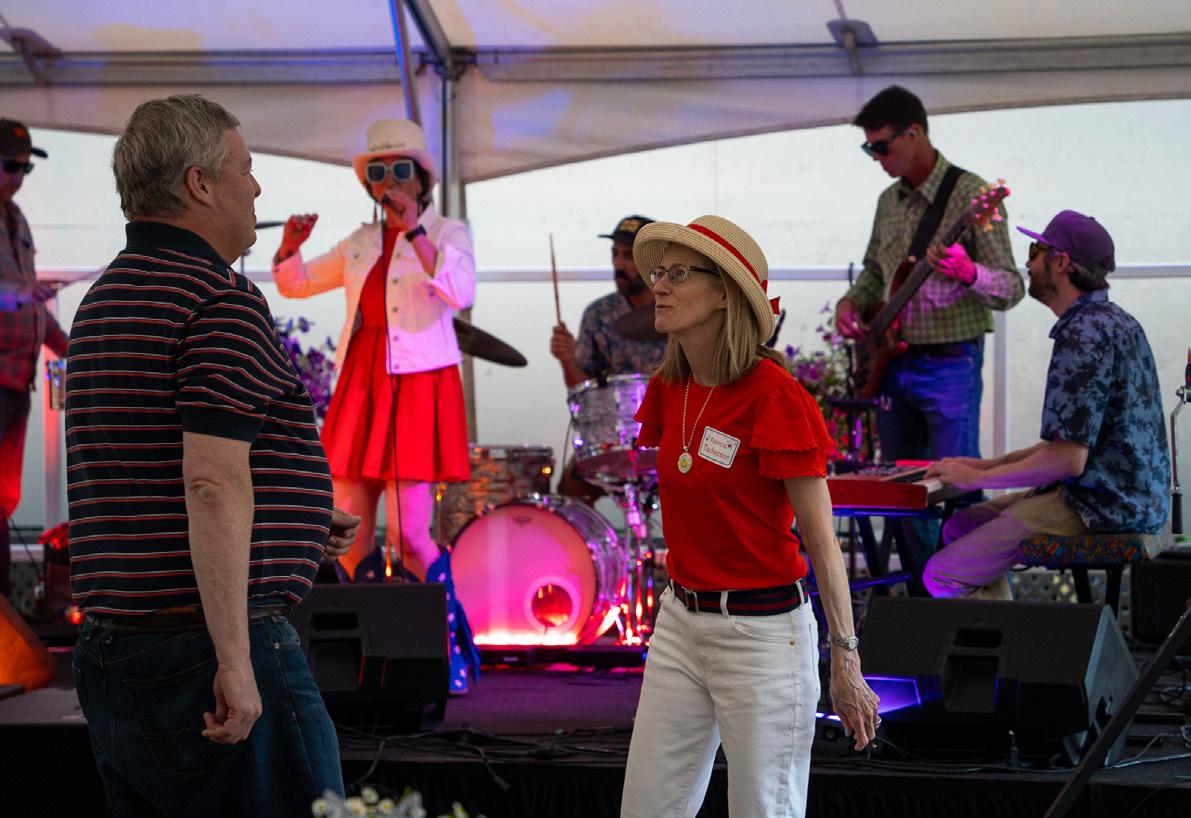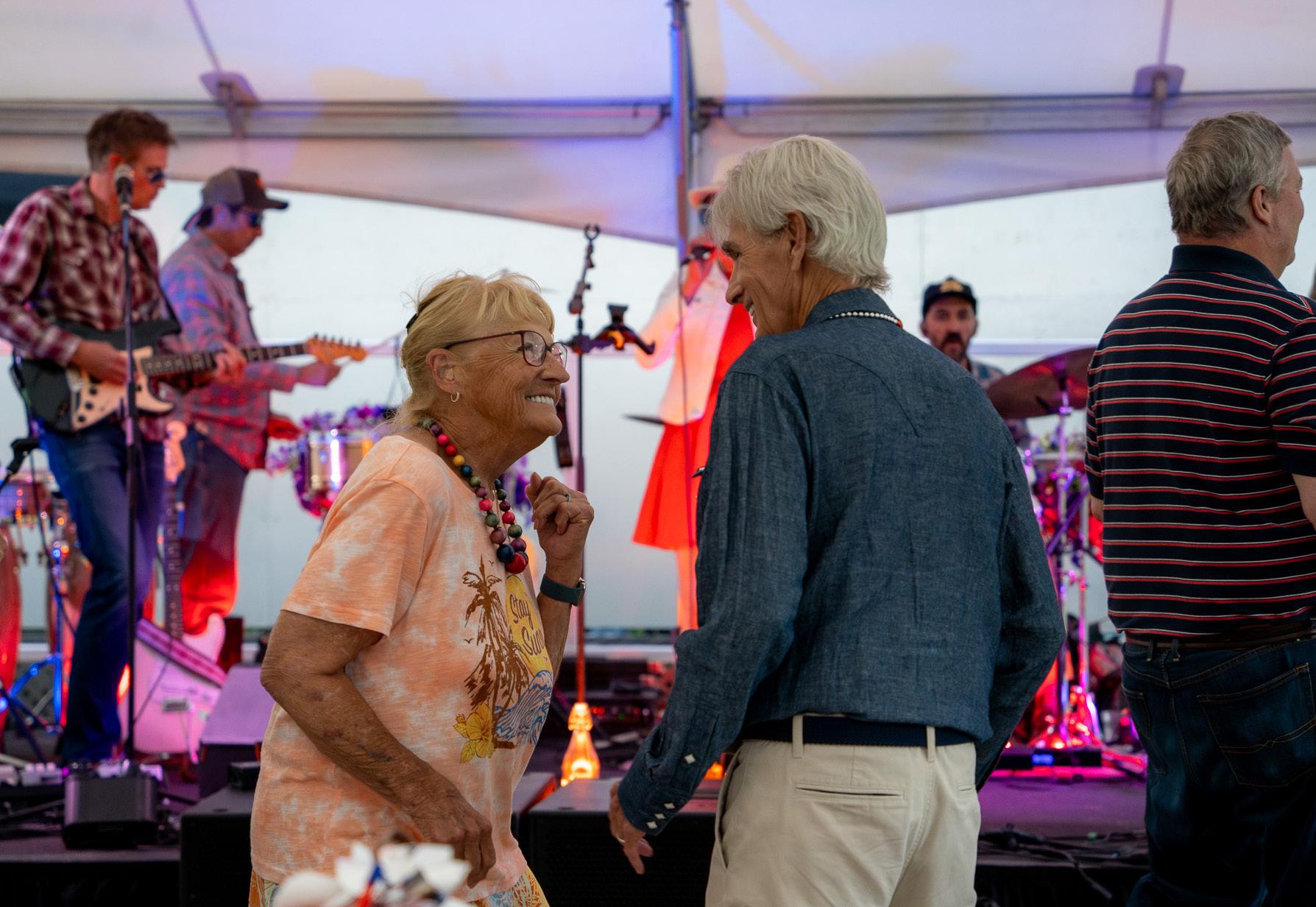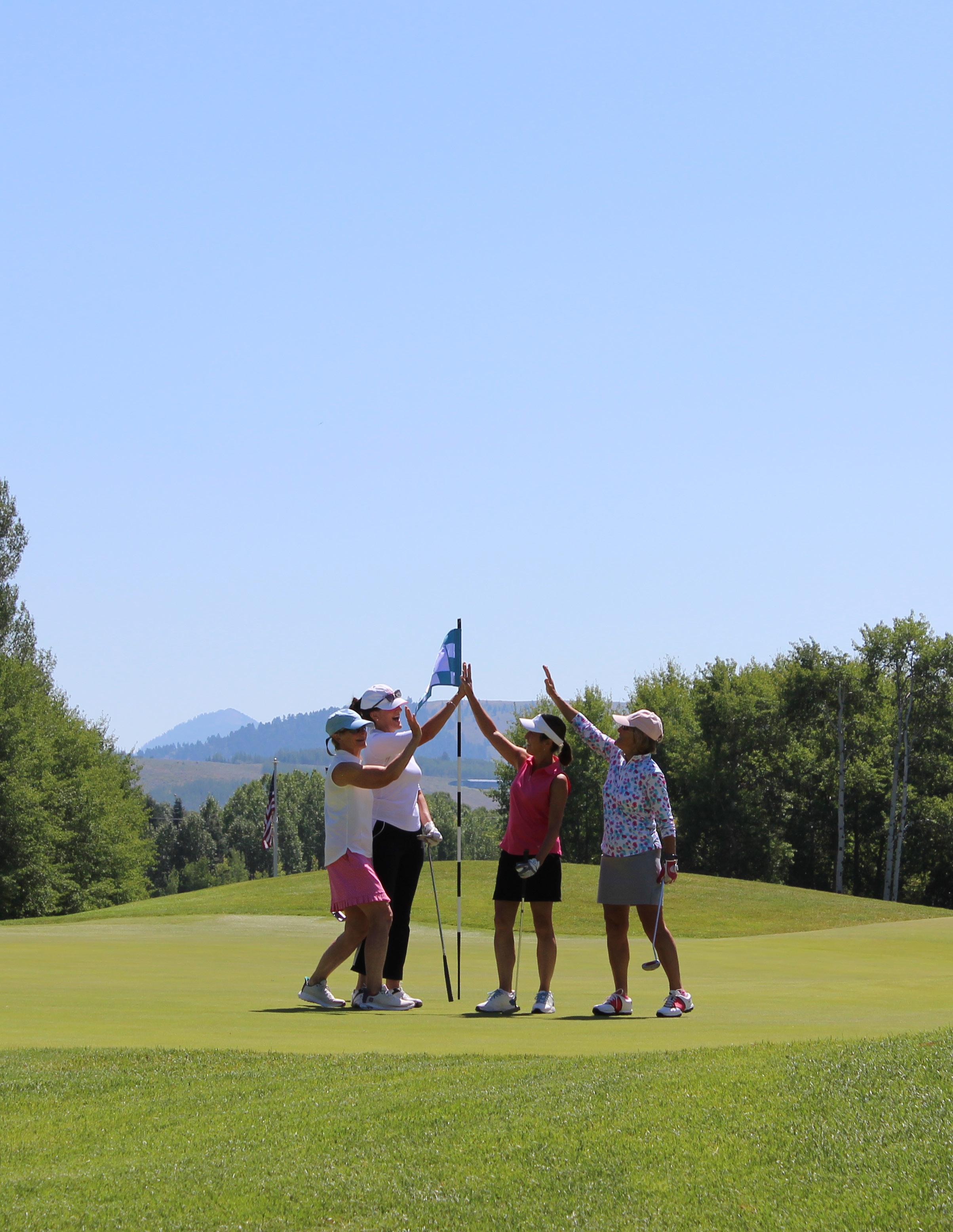
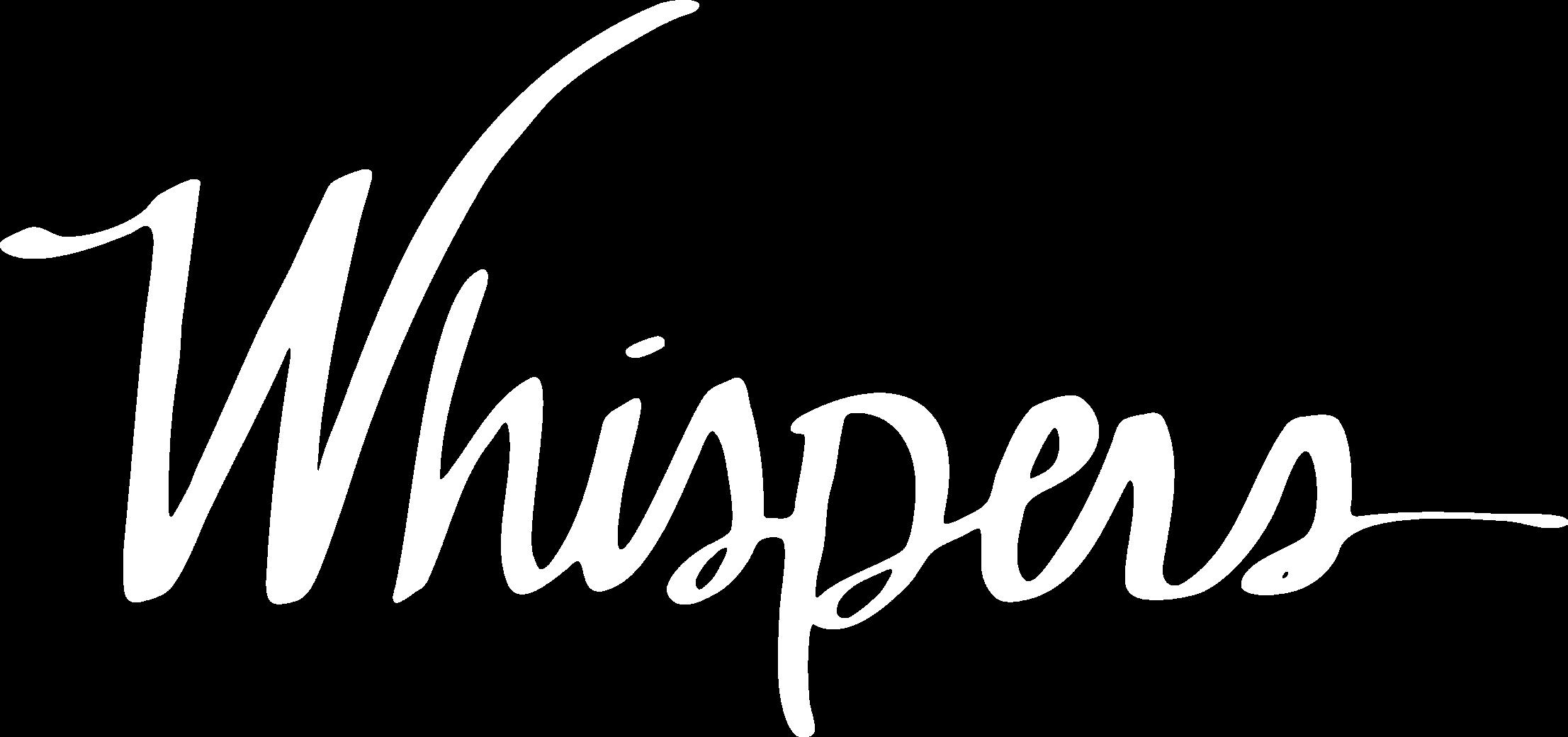





Lunch
Happy Hour - 1/2 off drinks
Dining Amenities
Golf
Racquet Sports
Pools
(Rec Pool and Big Blue closing on Sept. 1st)
Mon-Sat 11:30am-2pm
Wed-Sat 3pm-5pm
Dinner Wed-Sat 5pm-9:30pm
Patio Grill
Golf Shop
Mon-Sun 10am-6pm
Mon-Sun 8am-6pm
Range Mon-Sun 1st tee time-6pm
Racquet Sports Shop
Outdoor Courts
Mon-Sun 8:30am-4:30pm
Mon-Sun 8am-8pm Indoor Courts Mon-Sun 8am-8pm
Lap Pool & Hot Tub
Rec Pool & Family Hot Tub
Sun-Thurs 7am-7pm Fri-Sat 7am-8pm
Sun-Thurs 11am-7pm Fri-Sat 11am-8pm
“Big Blue” - Pool Snacks Mon-Sat 10am-7pm Fitness Members Only Gym (Reservations Required) Mon-Sun 6am-8pm
*Please note hours will change throughout the season. Check tetonpines.com for the most up-to-date information.
Teton Pines Country Club (307) 733–1005 info@tetonpines.com
Aquatics (307) 732-4109 wellness@tetonpines.com
Patio Grill (307) 732–4130 dining@tetonpines.com
Ext. 1 – Dining Room (307) 732–4119 dining@tetonpines.com
Ext. 2 – Racquet Sports (307) 733–9248 racquets@tetonpines.com
Ext. 3 – Golf (307) 732–4145 golfshop@tetonpines.com
Ext. 4 – Wellness & Activities (307) 732–4109 wellness@tetonpines.com
General Manager
AGM/Director of Membership
Financial Controller
Director of Food & Beverage
Director of Golf
Todd Bretzlaff (307) 732–4101 todd@tetonpines.com
Amy Bickley (307) 732–4102 amy@tetonpines.com
Tom Schneider (307) 732–4105 tom@tetonpines.com
Stacy Kovyazina (307) 732–4106 stacy@tetonpines.com
Steve David, PGA (307) 732–4126 steve@tetonpines.com
Golf Course Superintendent Mark Lyon (307) 732-4146 mark@tetonpines.com
Director of Wellness & Activities
Director of Racquet Sports
Director of Marketing & Comm.
Director of Clubhouse Experience
Director of Human Resources
Liza van Dissel (307) 732–4109 liza@tetonpines.com
Julie Weinberger (307) 733–9248 julie@tetonpines.com
Clark Hayden (307) 732–4116 clark@tetonpines.com
Salli Vickland (307) 733–1005x0 salli@tetonpines.com
Lynn Ward (307) 732-4103 lynn@tetonpines.com
Sigsbee W. Duck | TPCC Club President
Dear Members,

It is with great humility that I have the honor of serving as your Club President; however, it is also quite a bittersweet moment for me to be writing this message to our club members. The April 25 passing of my dearest Jackson Hole friend and our former Club President, John O’Dwyer, weighs heavily in all our hearts as our thoughts and prayers are with his wife Dorothy and his wonderful family. John’s shoes will be tough to fill; however, I promise you I will give it my best efforts working with our outstanding Executive Committee and Management Team.
As I take on this new role, I am excited to lead and serve our Club, and I look forward to interacting with and listening to feedback from each of you to ensure that Teton Pines continues to thrive and exceed expectations. This would not be possible without the skillful leadership and experience of our General Manager, Todd Bretzlaff and our Assistant General Manager, Amy Bickley. We are also blessed to have an incredible line up of Directors and team members that make everything at the Club possible. I do wish I could mention everyone, as it takes everyone’s input and efforts to make our Club the very best in the Valley.
Under the direction of our Building Committee Chairman, Bill Carpenter, with the extraordinary assistance of Paul Martini and Hanley Sayers, our new Wellness Center is advancing towards completion daily and hopefully ahead of schedule. It is going to be fabulous! I must also commend our Executive Committee members of the Finance Committee, Ritson Ferguson and Larry Kohn, as their direction and leadership have helped to make this new Center possible. Our next major challenge will be tackling the renovation of our clubhouse. As we get a little further with the design and layout of the main club-
house, we will look forward to holding another town hall to present the design and collect feedback on how it can be fine-tuned.
I would be remiss not to mention the other members of the Executive Committee who also donate innumerable hours helping to make sure Teton Pines will maintain its unique culture and social atmosphere. They are Susan Gervais (Racquet Sports Committee Chair), Mike Faems (Membership Committee Chair), and the newest member of the Executive Committee, Ed Liebzeit.
As your new President, I am committed to transparency and building on our Club’s strengths while also identifying new opportunities for growth and improvement. I encourage each of you to get involved, share your ideas and feedback, and help shape the future of your country club. I am confident that we can achieve great things and make the Club an even more special place to be.
In closing, I would like to again thank the Executive Committee and team members for their tireless efforts and dedication to our Club as well as each of you for being a part of this amazing membership community. I am honored to follow in John’s footsteps and look forward to working with all of you to make our Club the very best it can be. Thank you.
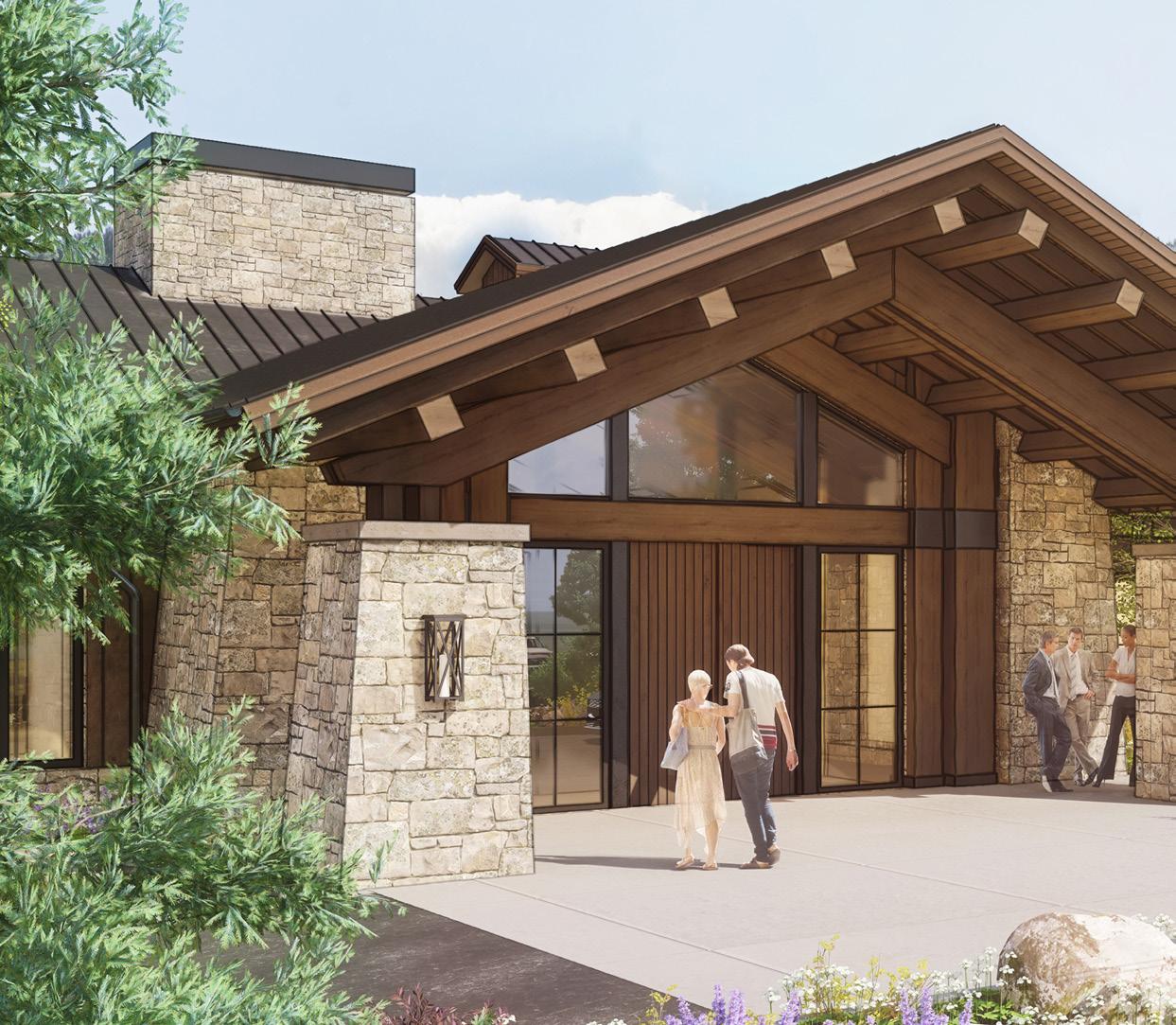
Todd Bretzlaff | TPCC General Manager
Dear Members,
It’s good to see members returning for the summer, and it’s even harder to believe that the summer is already half over.

I want to take a moment to look back on the somber note that began our summer, the passing of John O’Dwyer, our beloved Club President. It was wonderful to work with John for the past three years. John’s passion to ensure the Club remains healthy and strong while retaining the keen sense of community always stood out to me. With determination and clear direction, he was able to make such a difference in the Club’s future. It is just heartbreaking that he will not be with us to see it through.
With this most unfortunate twist of fate, Dr. Sigsbee Duck, a dear friend of John’s and Club Vice President, has stepped up as the President to lead the Club. Along with the other members of the Executive Committee, I am confident that Dr. Duck will continue to strengthen the Club’s foundation and work tirelessly to ensure that the Master Plan is completed in John’s vision.

I am happy to report that the Master Plan continues to be on schedule. The Wellness Center is steadily moving towards its completion. Though our contractor, Shaw Construction, is providing us with a conservative completion of June/July 2026, Paul Martini is actively coordinating with the site supervisor to get the project completed even earlier. Both floors of the building have been framed, and the drywall is in the process of being installed. On the exterior, the roof has been completed and by September Shaw will commence with the stone cladding, heavy timber board, and batten siding.
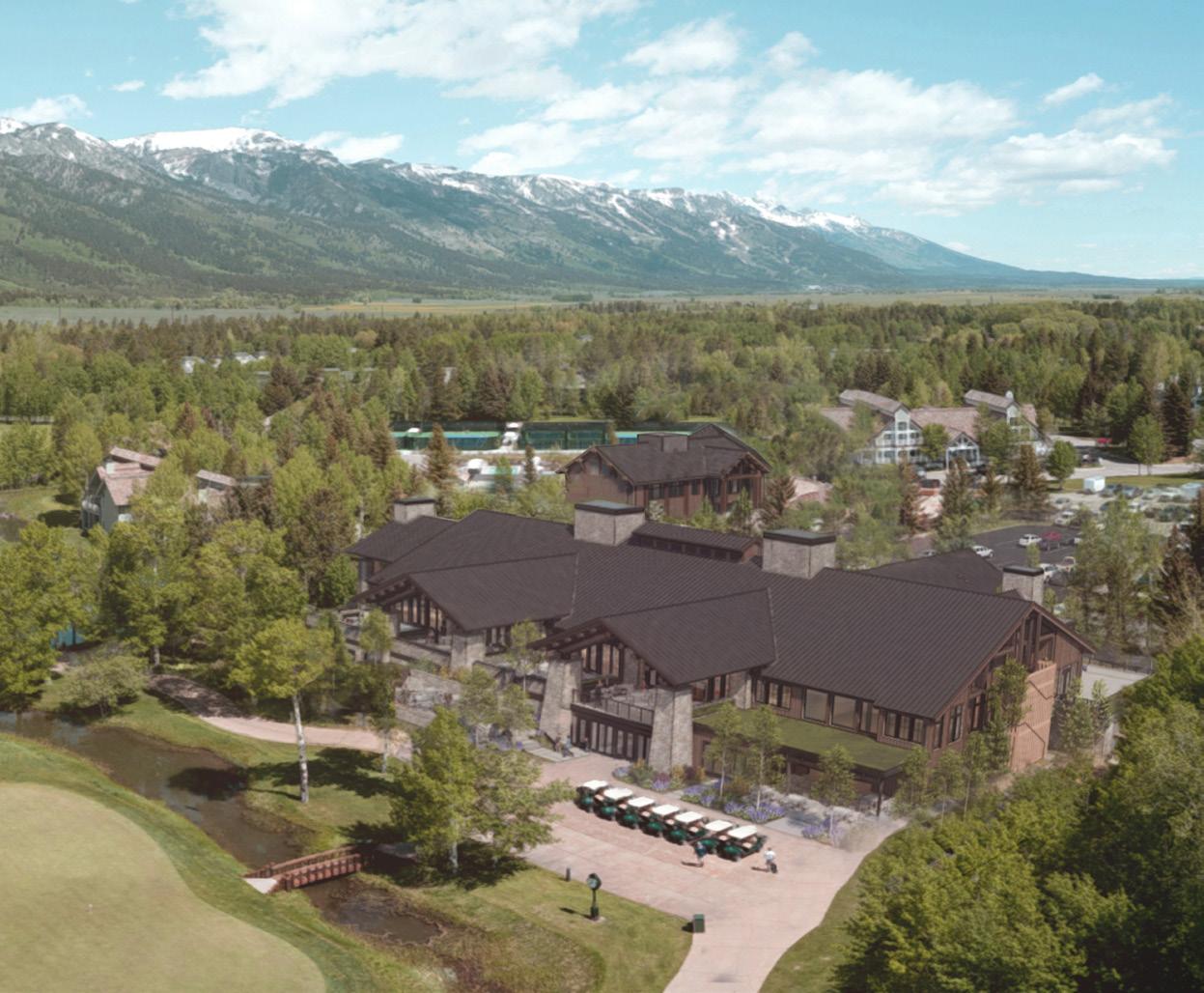
As the Wellness Center continues toward completion, Prospect Studio has completed the Schematic Designs for the Clubhouse and is working on more detailed designs now. The Master Planning Committee is very happy with the designs, both from a functional and aesthetic perspective. We look forward to sharing the designs with you in the coming months. I appreciate all the support and loyalty each of you has shown the Club as we continue through this significant renovation. We look forward to continuing to care for you in the coming years.
In our daily operations, the Club looks more vibrant than ever! Golf rounds, court usage, and dining
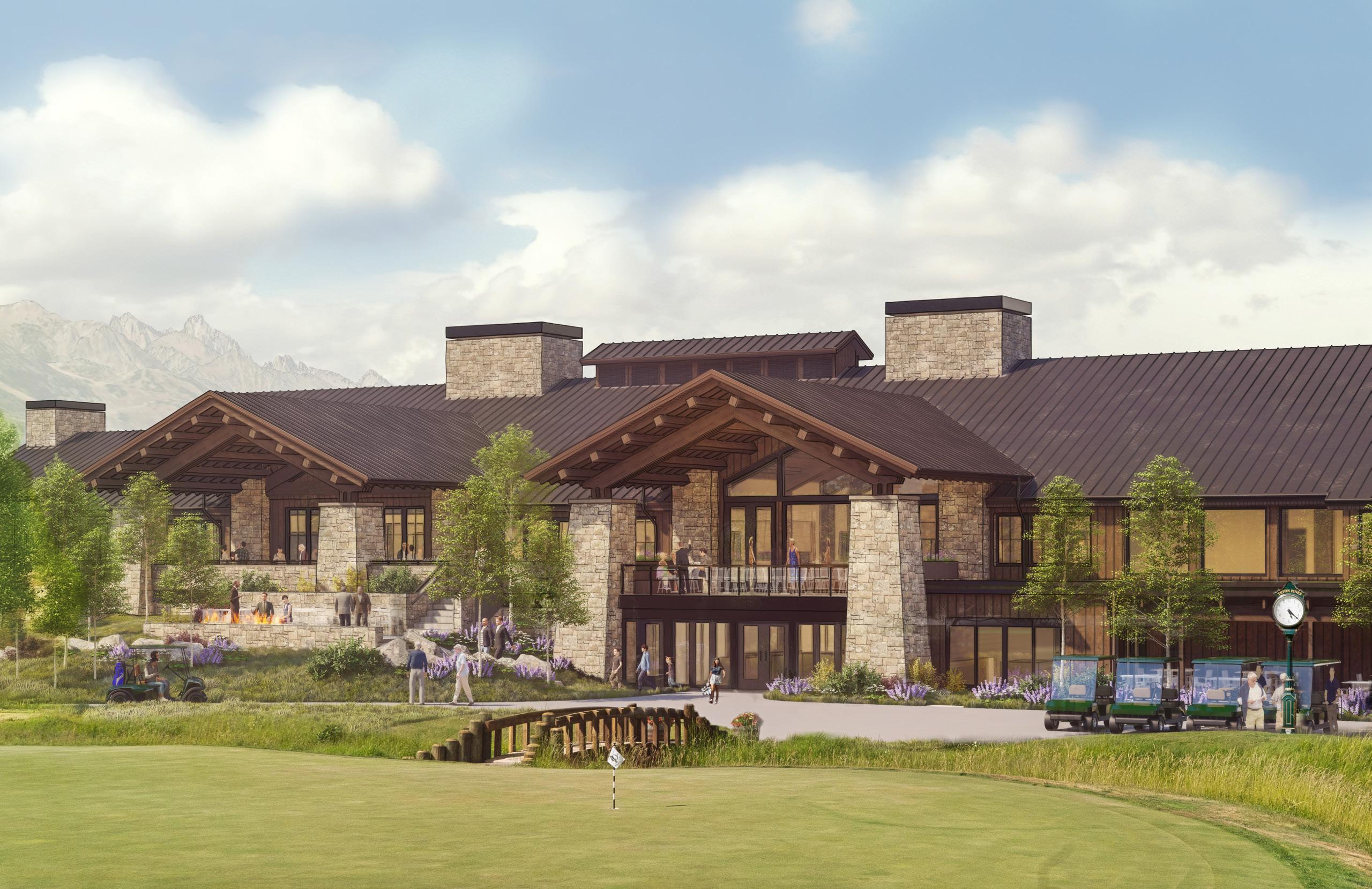
reservations are all higher than last year. The pool is remaining busy, as fortunately, the nearby construction has proven not to be as inconvenient as initially expected. Swimming lessons have picked up over prior years, and luckily there is still more room if you want to get your children in the pool. And I would like to remind the parents that there are still spots available in our Camp Teton Pines Summer Camp if you want to make any last-minute bookings for the coming weeks.
As we continue through our peak season, I would like to remind everyone of some club rules that are commonly forgotten:
• Men may not wear hats in the clubhouse
• Men’s shirts must be tucked in on the golf course
• No speaking on cell phones in the clubhouse, other than in designated areas
Following these rules provides a better experience for all members, and our team is actively working to enforce these daily.
There is still plenty of summer left to soak up at the
Club, and some of the best events are yet to come. On Saturday evenings, we have Pam Philips playing piano in our dining room, and every Wednesday, we are now mixing it up with different entertainers in the lobby. We will finish off the summer cocktail parties at the Golf Course Maintenance building on August 19th, and our last big party of the season will be on Labor Day BBQ held on Monday, September 1st.
Last but not least, I would like to extend my congratulations to a man whose dedication to the club is second to none, Alan Carter. Warmly known around the Club as “Ace,” he was recently awarded the 2025 Employee of the Year! He has set the example that all of our team strives for every day. Congratulations Ace!
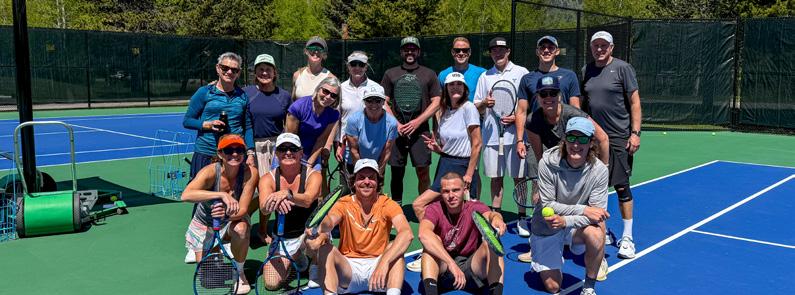


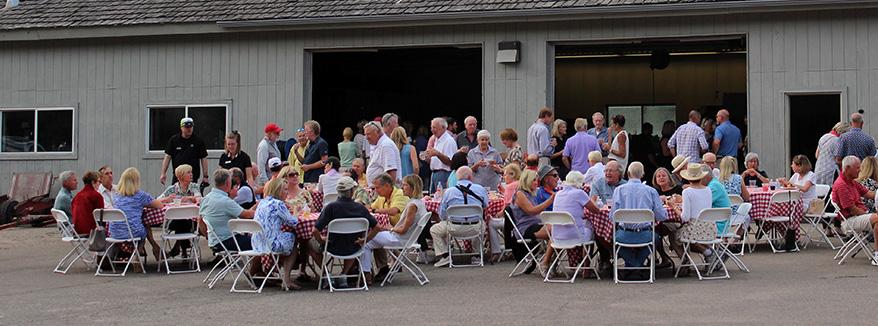
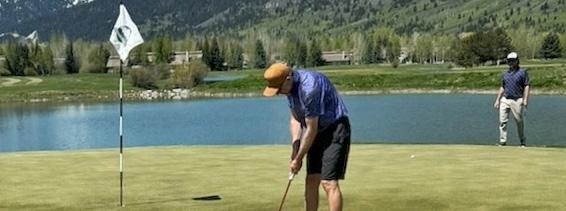
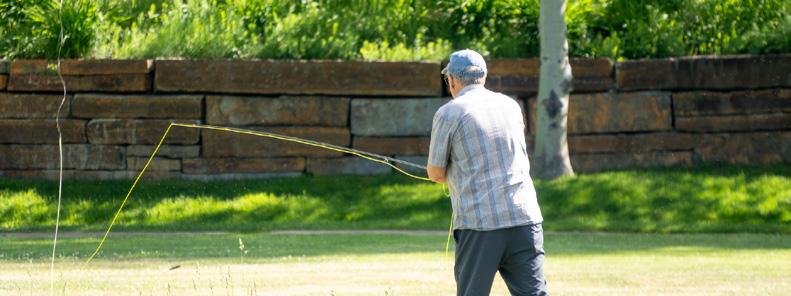
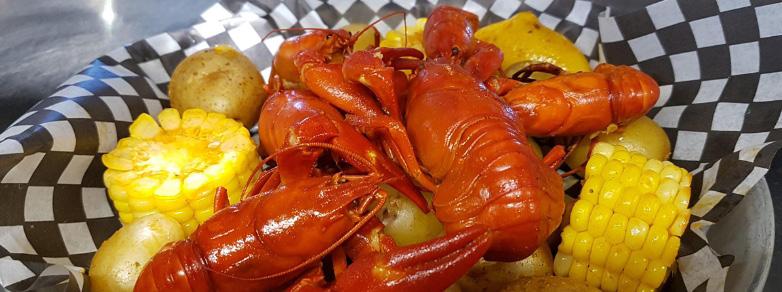
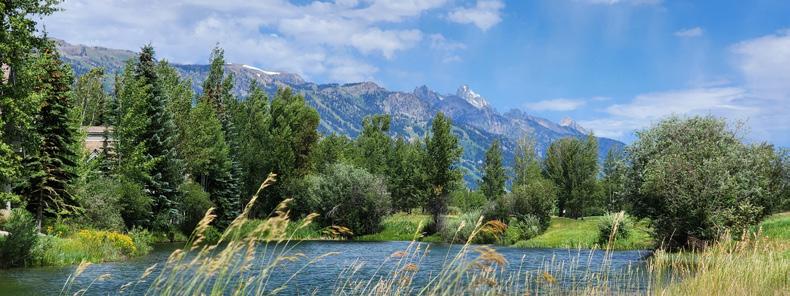
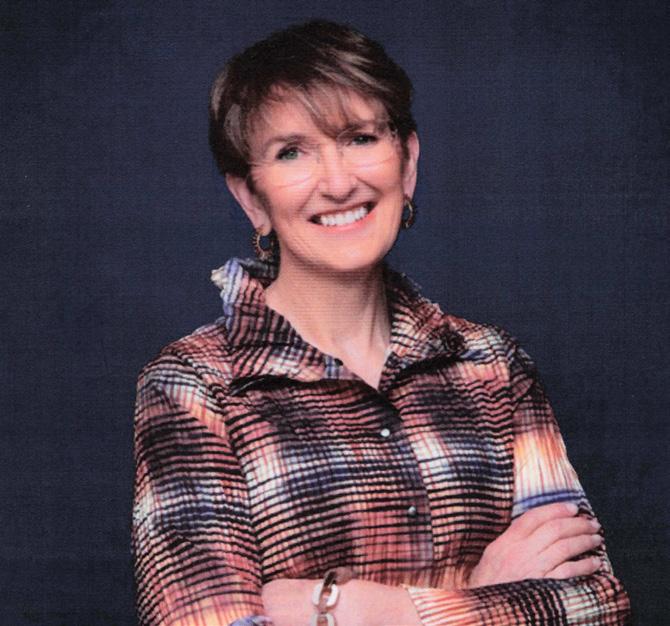
Caroline Mortimer
Sponsors: Susan & Michael Bird
Gretchen & David Miller
Sponsor: Emily Reycroft
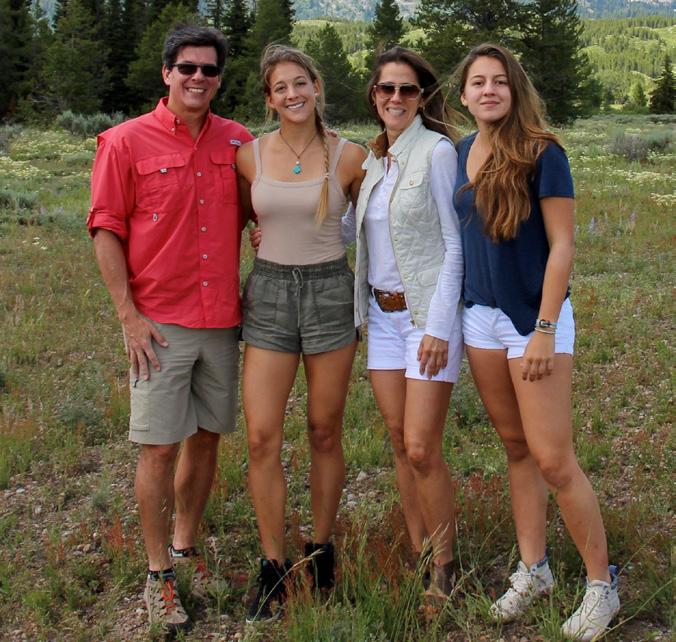

Mairym & Carlos Navarro
Sponsors: Heide & Bill Kaiser
Michelle & Robert Stevens
Sponsor: Hanley Sayers
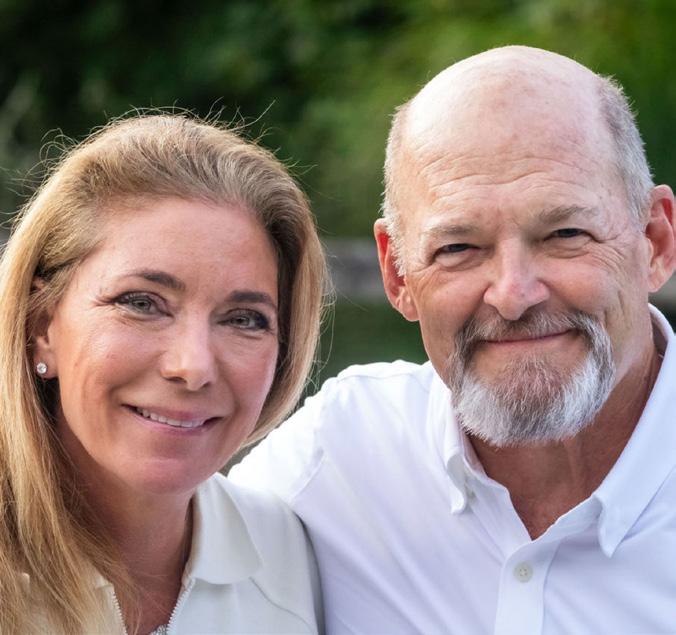
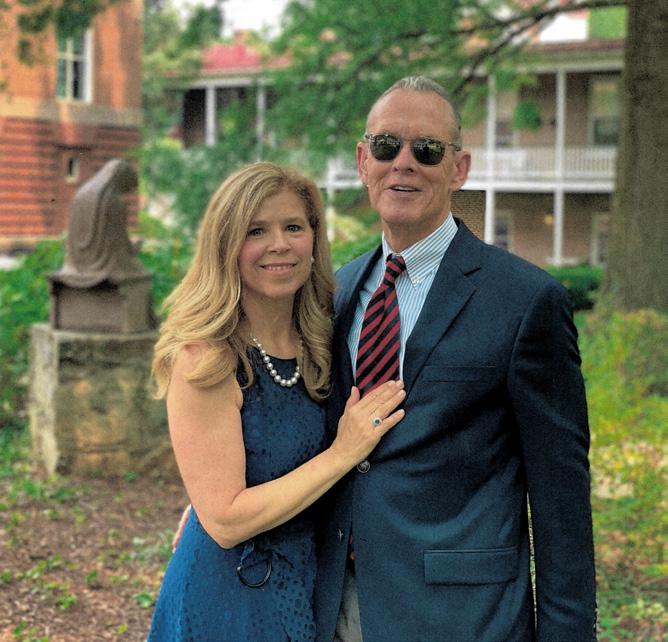
Antoinette & Jerry Silvey
Sponsors: Goldie & Paul Winn
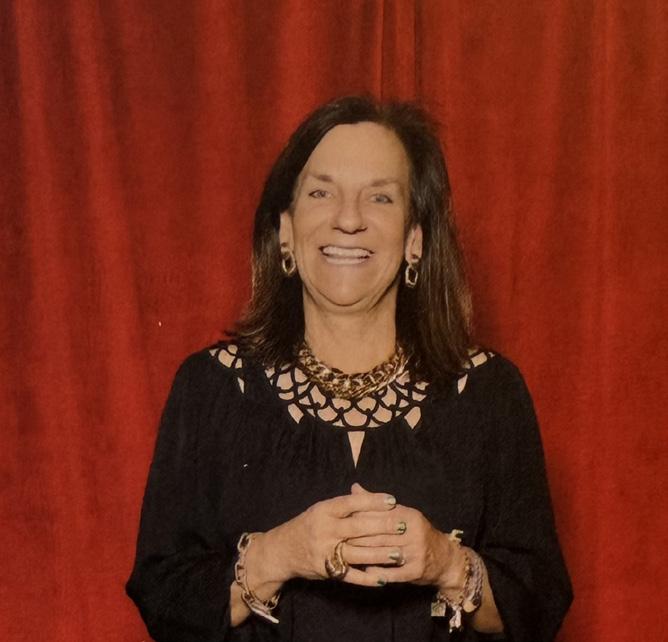
Ilse Sidles
Sponsors: Lindsay & Jackson Brandenburg
Beatriz Suarez & Peter Wilby
Sponsor: Stephen Zipperman

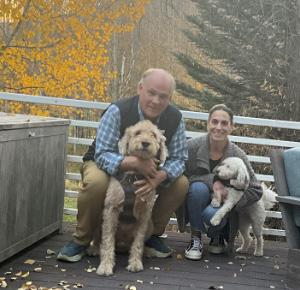
Jane & Andy Stephens
Sponsors: Lindsay & Jackson Brandenburg
Jen & Jason Krupoff
Sponsors: Maggie & Tom Simms

Cheryl & Dave Battan
Sponsor: Robin & Marshall Durston
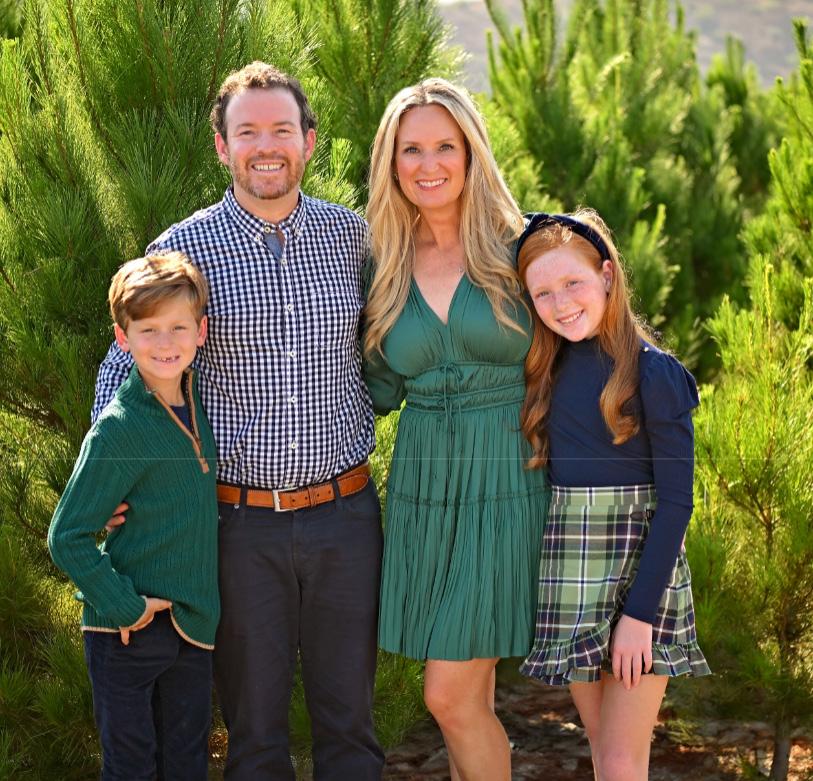
Gracie Beaudin
Sponsors: Robin & John Fields
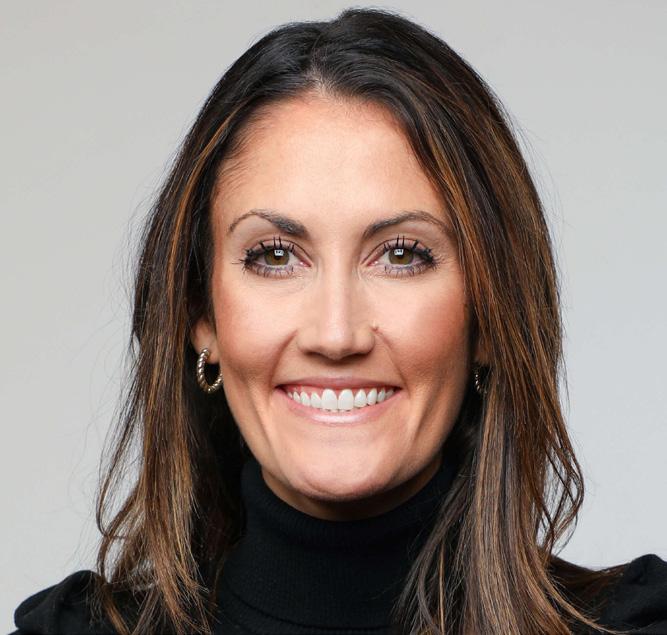

Steve David, PGA Director of Golf
Bunkers are among golf’s most iconic (and pesky) features. Their origins trace back centuries to the coastal links courses of Scotland, where the game was started. Long before golf architects shaped courses, natural sandy depressions and dunes dotted the landscape. Interestingly, many of these early “bunkers” were created by sheep grazing. As sheep repeatedly walked and rested in certain spots, they naturally wore down the turf, exposing sandy soil underneath and forming depressions filled with loose sand. These accidental hazards would soon challenge golfers.
These natural bunkers became an integral part of the game’s early character, offering both risk and strategy. Over time, golf course designers took inspiration from these sheep-made patches and began creating man-made bunkers, placing them to test players’ skill and decision-making.
Early bunkers were often irregular and simple, but as golf evolved, so did bunker design. Today, bunkers are carefully sculpted to fit the landscape and strategic intent of the course. At Teton Pines, the 2021 renovation led by Thad Layton of the Arnold Palmer Design Company resulted in a 25% reduction in total sand. This move improved aesthetics, simplified maintenance, and sharpened course strategy. The new bunkers feature natural, rugged shapes inspired by the Teton Range’s terrain, with grassy faces and irregular edges that complement our stunning setting.
From a strategic perspective, bunkers influence shot selection and course management, forcing golfers to weigh risk versus reward. Their placement near fairways, greens, or landing zones requires players to consider not only distance and accuracy but also recovery options when shots don’t go as planned. Modern bunker shapes and contours add subtlety to these decisions, rewarding creativity and skill.
An often overlooked but crucial element of bunker design is the type of sand used. Golf course architects and superintendents carefully select bunker sand based on factors like texture, color, drainage, and playability. Some architects prefer bright white, fine sand that visually contrasts with greens, while others opt for coarser, more natural-looking sand that blends with the course’s surroundings.
The grain size affects how the ball reacts: finer sands tend to allow the club to glide through more smoothly, while coarser grains create more resistance and challenge. Drainage is another consideration; sand must be porous enough to prevent puddling and maintain consistent playing conditions after rain.
Ultimately, selecting the right sand is a balance between aesthetics, playability, maintenance, and environmental factors. Many courses choose sand that complements their regional environment to preserve a natural look and support sustainability.
Maintaining bunkers has always been a labor-intensive task. In early golf history, upkeep was minimal, as bunkers were simple and natural. However, as courses grew in complexity and expectations for conditioning increased, bunker maintenance became a specialized focus. Keeping sand clean, well-raked, and properly drained requires daily attention and significant resources.
The bunker rake has an interesting origin. Initially, players themselves would smooth out their footprints and ball marks, but as the game and course maintenance professionalized in the late 19th and early 20th centuries, dedicated rakes were introduced. These tools allowed grounds crews to quickly restore bunkers to consistent playing surfaces after rounds, improving pace of play and fairness.
Modern maintenance practices involve frequent mechanical and hand raking to keep sand smooth, edges trimmed to prevent grass encroachment, and drainage systems checked to avoid pooling water. Bunkers also require periodic sand replacement and liner inspection to maintain their integrity. At busy clubs like Teton
Pines, bunker upkeep consumes a considerable portion of the maintenance budget and staff time.
Fortunately, advancements in bunker liners and drainage technology have reduced some maintenance burdens. Durable liners prevent soil contamination, helping sand stay cleaner for longer. Efficient drainage systems prevent water accumulation. These improvements allow courses, like our course, to invest in more naturalized bunker designs with grass faces and organic shapes.
The game’s relationship with bunkers was forever changed with the invention of the sand wedge in the 1930s by golf legend Gene Sarazen. Sarazen, frustrated by the difficulty of escaping bunkers with traditional clubs, designed the sand wedge with a wider sole and increased bounce. This specialized club made it easier to “explode” the ball out of sand traps by preventing the club from digging too deeply into the sand, giving players more control and confidence.
The sand wedge quickly became an essential tool, allowing golfers to tackle bunkers strategically rather than simply avoiding them. Its invention influenced bunker design and course strategy, as architects began incorporating more and varied bunker placements, knowing players had a reliable club to navigate them.
• Open Your Club Face: Slightly open your sand wedge before swinging. This increases loft and bounce, allowing the club to glide through the sand.
• Hit Behind the Ball: Aim to enter the sand 1–2 inches behind the ball. The sand carries the ball out, producing a high, soft shot.
• Accelerate Through Impact: Keep a smooth, confident swing and avoid slowing down at impact. Let the club do the work and follow through fully.
From year to year, the golf course environment can change quite a lot. From huge snow years, to summers of drought, there is always something different that mother nature sends our way that changes how we operate in small ways. In general though, the yearly cycle has a rhythm to it that is fairly consistent.
Starting around the new year, I usually head out and do some scouting on greens to see how the winter is treating us. At this point, I generally have an idea of what may be happening based on the weather in November and December, but it is always good to get eyes on the grass. This usually involves digging small pits on the greens in places that have historically held ice for us. If there is no ice formed by this point, that is a really good sign. If there is ice, that triggers a whole chain of action to mitigate damage to the greens.
The next big event for us is the removal of snow from the greens which usually begins in early March. In the past, we have mechanically removed the snow with blowers. While this may be necessary in the future due to ice cover, if the greens are ice free, we will choose to melt the snow off going forward. To do this we use a black soil amendment called humic acid. It is not a fertilizer, but a product that allows for better nutrient uptake throughout the growing season. It also just happens to be dark black and absorb sunlight very well.
Throughout April and May, we are focused on fixing winter damage and giving the grass a great start so that it can survive the heat of summer. Over the last
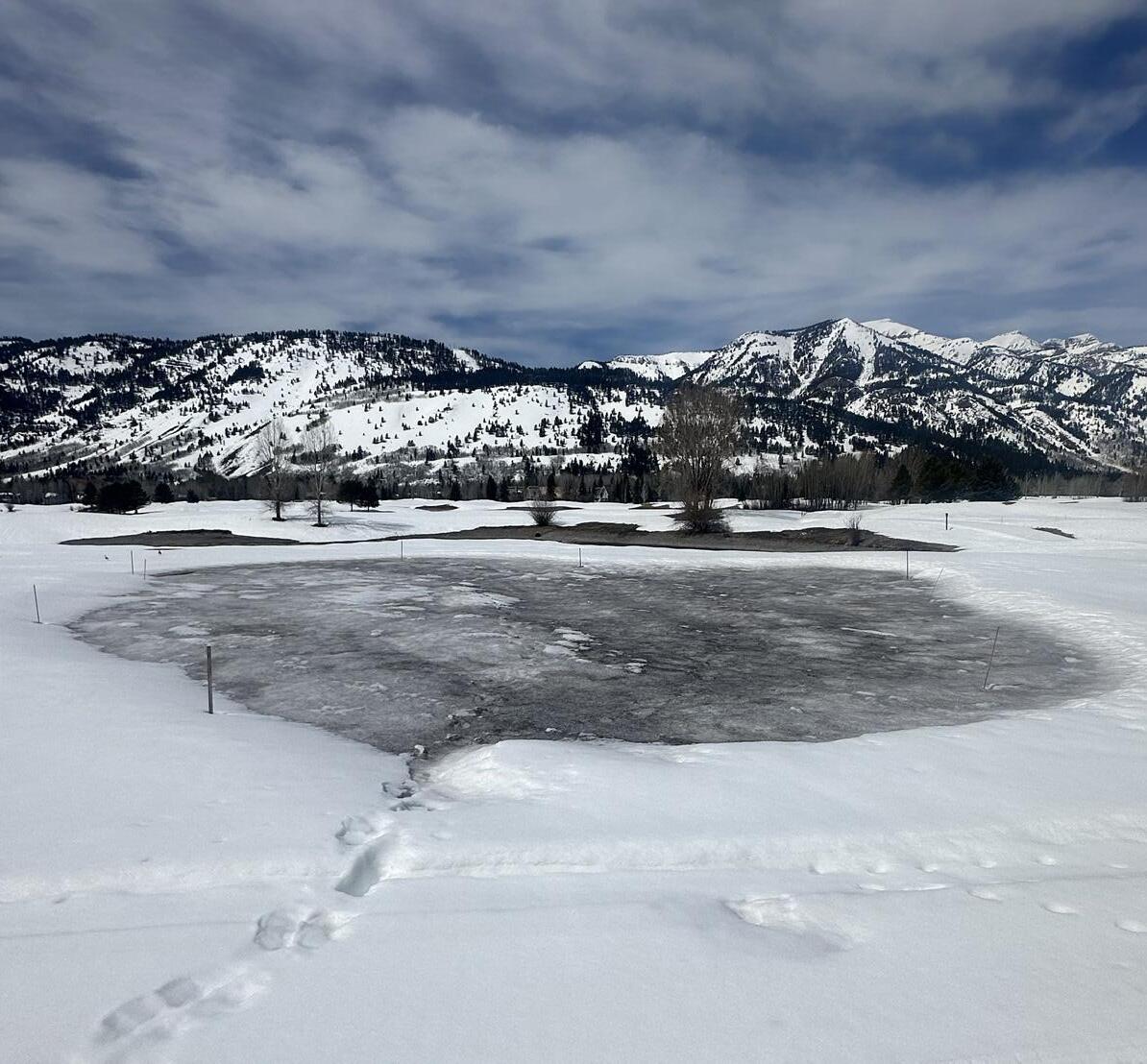
20 years, the average opening date for the golf course has been May 1st. Most years, the weather in April and May is pretty cold and wet, so we do not get a lot of comments on green speed and cutting height. This May, the weather was warm and wonderful so people understandably were asking about these things. My approach in these months is simple and consistent. I want the greens to thrive and send roots deep into the ground in anticipation of our normally dry summers. Cutting the greens down to summer height in mid May would hinder this growth and put the greens in a worse position at the beginning of the season. I usually plan to get the cutting heights all the way down and the
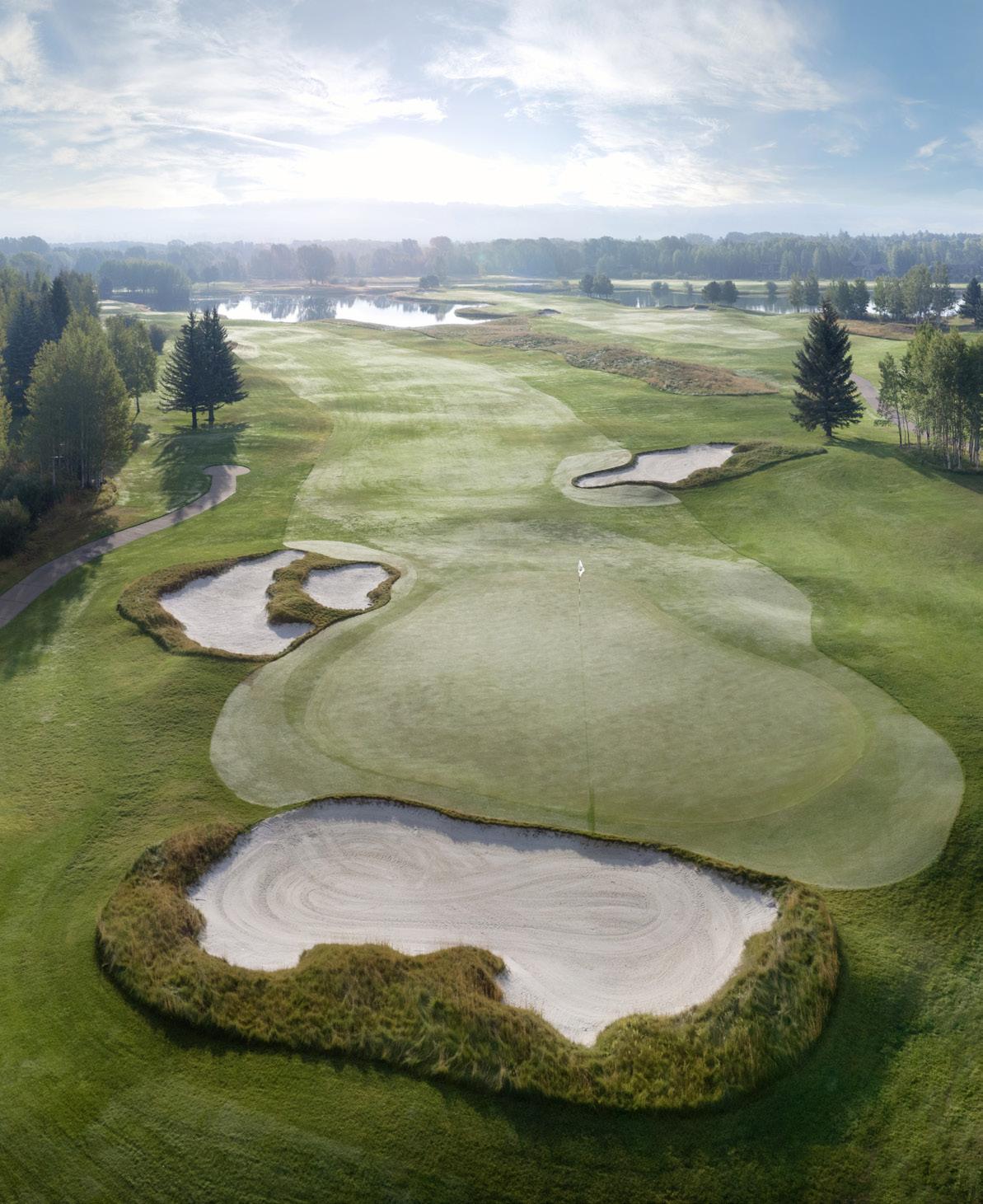
green speeds up in the second or third week of June depending on the weather that year.
June, July, and August are the fast and furious months for us in Golf Course Maintenance. Lots of play, along with lots of maintenance makes these months seem to
fly by. The bulk of our focus during this time is water management, growth regulation, and fertility. These are the variables that change the way we operate from season to season. Mowing schedules, course set up, and bunker maintenance remain pretty consistent during these months, and before we know it we are experiencing frost delays as September knocks on the door.
September and October are all about prepping the course for winter. While I believe that this is the best time of year to play the course, our focus has to shift a bit from green speeds and cup placements to cultural practices, preventing snow mold, and prepping the irrigation system for winter. We usually plan to have the crew working out on the course until the end of October, but sometimes mother nature lets us get a week or so into November before shutting us down.
The nature of this yearly rhythm and how it breaks up the season seems to accelerate time down here in Golf Course Maintenance. As a smarter person than me once said, “The days are long and the years are short.” This seems as good a way to describe our Wyoming golf seasons as I can find.
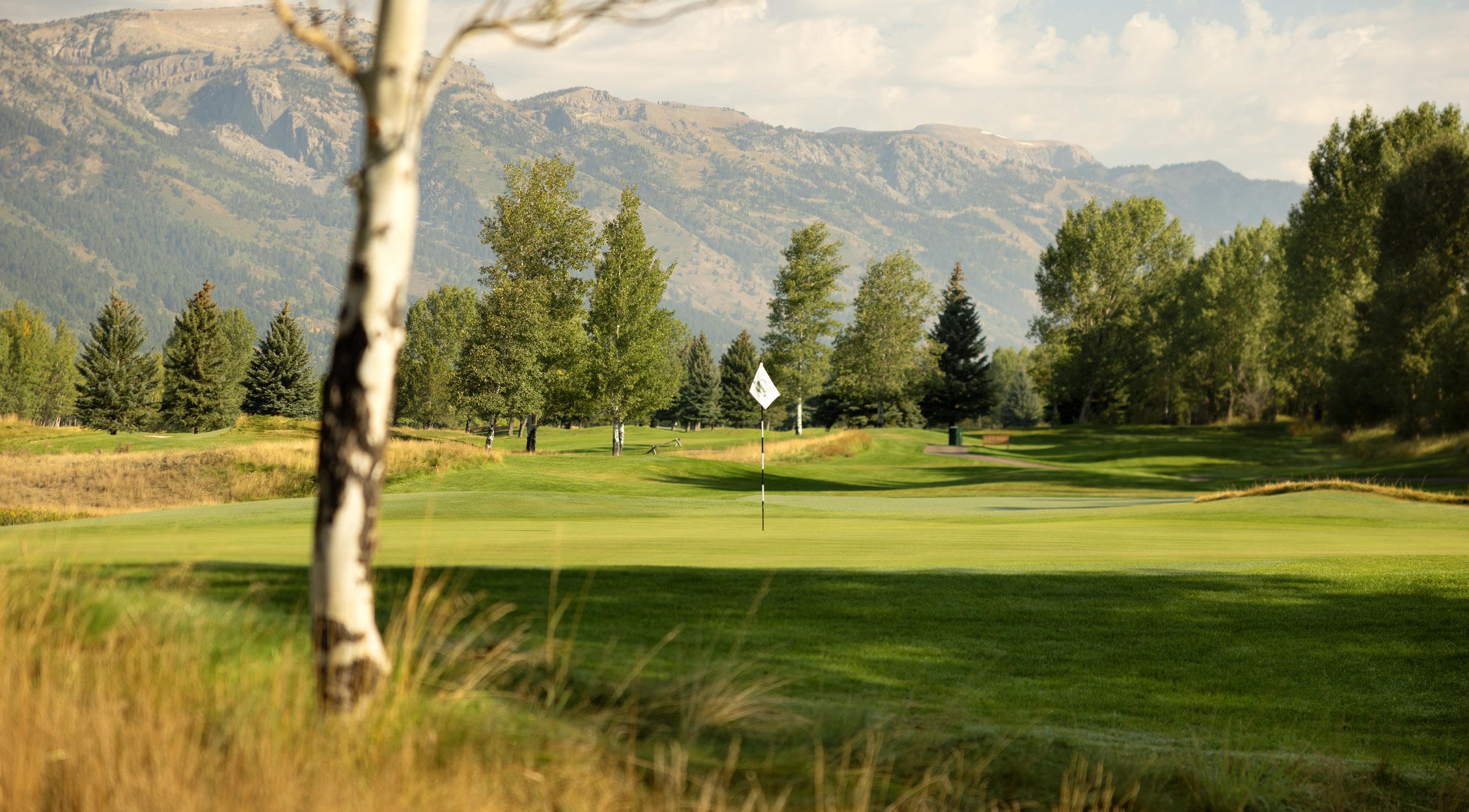
Stacy Kovyazina Director of Food & Beverage
Every single time when I travel around the world, I ask this question: Why is there such a difference in the food in the USA and elsewhere? Why does the same product taste different in different countries?
Traveling to the different parts of the world shows you that you can eat smaller portions while feeling lighter. Apples may not look as shiny and perfect, but they taste better and they actually have a sweet smell. The buffet portion sizes look small, but you understand that you cannot actually eat that much when you start your meal. You can drink a cup of soda and not see huge sugar swings in your body. And these are just funny little examples, but we can find many more.
On many social media platforms, health gurus list out what they eat in a day. Once in a while, you’ll come across a TikTok of a fitness influencer claiming that they only eat meat and raw milk. Or, there is someone who only eats fruit and vegetables but no processed foods. There could also be someone who eats sea moss by the spoonful, claiming that it magically fixes gut health problems. If you ever casually glance at the back of a snack package, you might recall skimming over some of these listed ingredients, acknowledging that you know very little about them, and consuming the tasty treat regardless. But the thing that all these influencers have in common is that they avoid typical “American” foods. They don’t go to McDonald’s, and they don’t eat Cheetos. Why? Because the United States allows additives in foods that are illegal in many other countries.
Let’s look at the ingredients of famous McDonald’s French Fries:
American version: Potatoes, vegetable oil, corn oil, soybean oil, hydrogenated soybean oil, natural beef flavor, dextrose, sodium acid pyrophosphate, salt, fried in a vegetable oil blend with citric acid and Dimethylpolysiloxane.
European version: Potatoes, vegetable oil (sunflower, rapeseed), dextrose. Fried in non-hydrogenated vegetable oil. Salt is added after cooking.
The United States is unique in that it allows these eight ingredients in food products: rBGH, ractopamine, potassium bromate, brominated vegetable oil, olestra, azodicarbonamide, coloring agents (also known as Red #40, etc.), and BHA and BHT. rBGH is used in milk and yogurt. It is injected into cows to increase milk production and causes many issues in cows, but it also causes allergic reactions in humans.
Ractopamine is used to increase lean muscle in animals, but it is known to cause heart problems in humans. Potassium bromate is used to make bread fluffier but can cause bronchitis. Brominated vegetable oil is used to keep the flavor in soda from floating to the surface, but it can cause irritation to human skin and the linings of the mouth, nose, and lungs. Olestra is a fat-free substitute but causes bloating and intestinal problems, and azodicarbonamide is used to bleach flour but can cause asthma.
Coloring agents are used to color foods and are linked to neurological problems such as brain cancer, ADD, ADHD, and more. BHA and BHT, which are used in foods like gum and vegetable oil, can also cause cancer.
All of these additives are banned in Europe, yet they are commonly used in American food. How can ingredients banned in some countries be in the food of other countries? Why is this allowed? Because these chemicals make American food products visually appealing, long-lasting, and more satisfying to eat.
In Europe, the European Food Information Council, or EUFIC, regulates which ingredients are allowed in food products, while in America, the Food and Drug Administration, or FDA, does this task.
The FDA requires that companies list eight common allergens in their food products: eggs, milk, fish, shellfish, peanuts, tree nuts, wheat, and soybeans. The EUFIC, however, requires 14 common allergens to be listed: celery, mollusks, fish, eggs, rye, gluten products, peanuts, mustard, tree nuts, sesame seeds, soybeans, sulfur dioxide, sulfites, and lupin. Clearly, less thought goes into the American food label compared to the European one. This rule applies to other aspects of food packaging, including caloric markers; American food regulations state that calories can be listed for the serving size of food rather than the entire food. European calorie counts are not based on serving size but rather on every 100 grams, a more informative measure.
Furthermore, the FDA allows additives to be used in American foods until they are proven harmful. Europe, on the other hand, will only allow certain additives in food after they have been proven to be unharmful, demonstrating that American corporations care less about the health of their foods than those in Europe. Why do these organizations have different approaches toward food? Well, the FDA is a reactive government agency, while the European agencies are precautionary. In America, growth hormones and chemical preservatives are used to produce larger foods and to make sure that the shelf life of food products is longer. However, EUFIC and EFSA (the European Food Safety Authority) prohibit hormones and advise against preservatives. It is important to be conscious of the ingredients in our food. While we don’t necessarily have to eat sea moss gel and avoid all American snack foods, we should stay aware of the quality of our food.
In the TPCC kitchen we always are going towards high-quality ingredients, local vendors, and organic products as much as we can.
For example, in our kitchen we use organic Smart Chicken Breast for $8/pound. There is an option to buy chicken breast for $4-$4.50/pound with the other vendors.
We prefer organic ketchup instead of a large can of regular ketchup. We love the aromas of local greens instead of a large bag of mixed greens from Sysco.
It can be hard to tell the difference at the first look, but we put care into each ingredient.
We are hoping to see you around more this summer to explore healthy flavors together. With the warmer weather, there’s no better time to experiment with fresh, seasonal ingredients and create delicious, nutritious meals that everyone can enjoy.
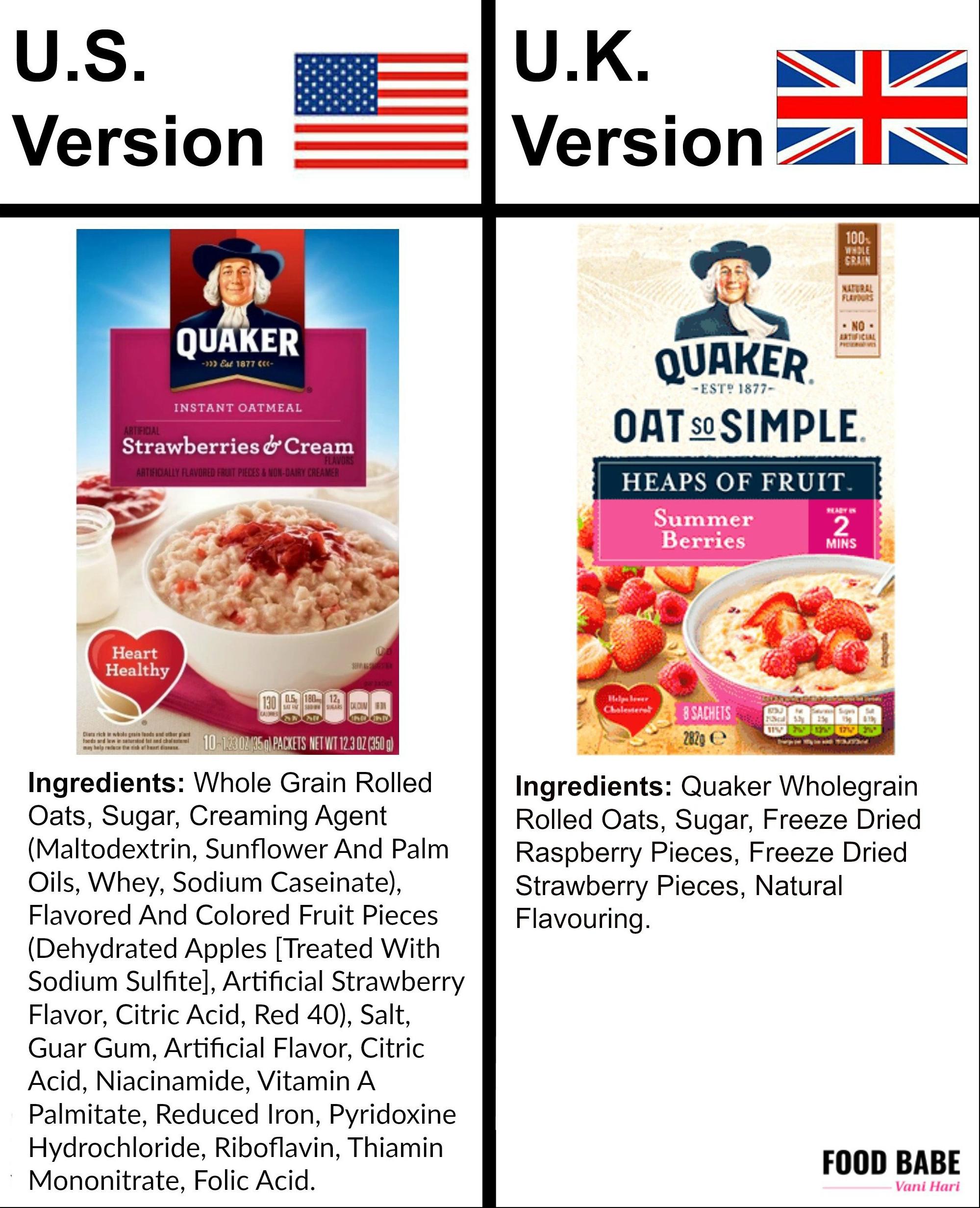
Julie Weinberger Director of Racquet Sports
Why take pickleball and tennis lessons as an adult? Many players think that once they’ve hit a certain point with their games; “It’s good enough.” They think “I’m enjoying the social and physical benefits” and we agree that this is fantastic. But the learning doesn’t have to stop at this point. There are so many reasons to continue your progression by taking lessons!
For starters, enhancing technique can help prevent injuries. When we make simple adjustments to strokes we help avoid wrist, elbow, and shoulder problems. These injuries can knock you out of the game for months on end. If you’re not playing, you’re losing out on those social times with friends, the mental boost of endorphins, and the physical benefits of muscle movement.
Lessons can also help with coordination and balance. Many of us don’t realize that we’ve picked up inefficient habits over time. A coach spots where your upper and lower body aren’t working together and will offer tips that improve movement and control. This leads to long-term balance improvements on and off the courts.
All these improvements typically lead to more enjoyment of the game. Although, many of us wouldn’t want to admit it, as humans we are wired to enjoy activities more when we are better at them. Our structured learning helps you improve quicker with personal feedback, targeted drills, and consistent cues.
Though structured, our learning opportunities don’t feel stiff or overly serious. Some of the most effective sessions happen in relaxed, social formats. One of my favorites is the “3 & me” lesson. In these lessons we book three players with one pro. It’s casual, focused, and works on your game in real situations. You get the structure of a lesson, but it feels like a friendly match with guidance woven in.
Our weekly drills offer a similar balance. We coach with intention, without taking the fun out of the game. They are a great way to connect with others and improve your game over time!
We are all looking forward to seeing you on the courts!




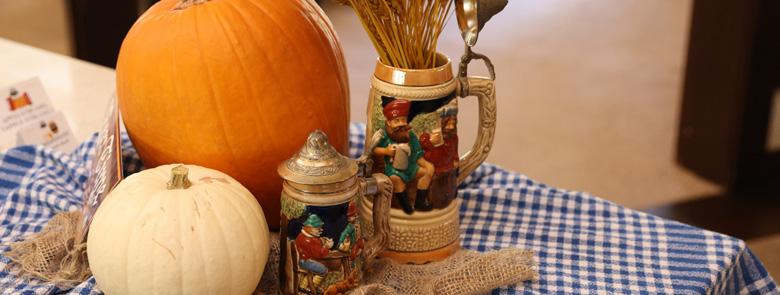

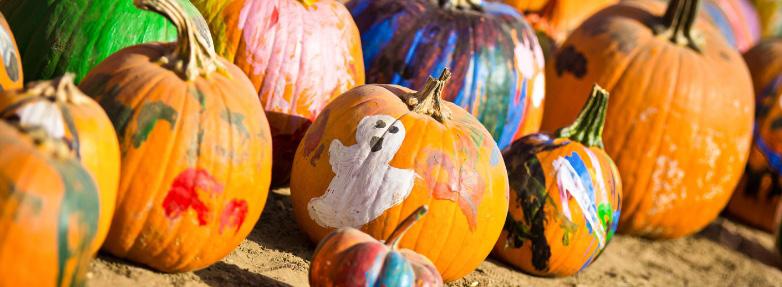

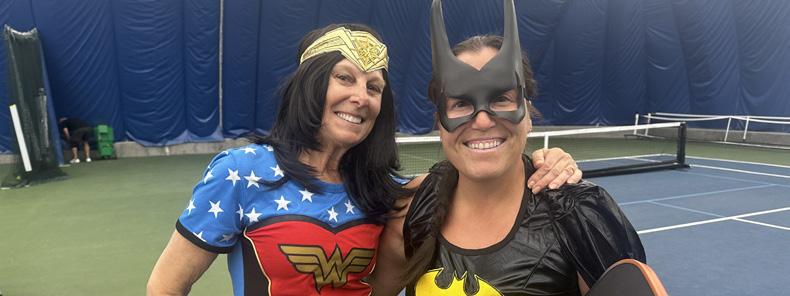
July 3rd, 2025
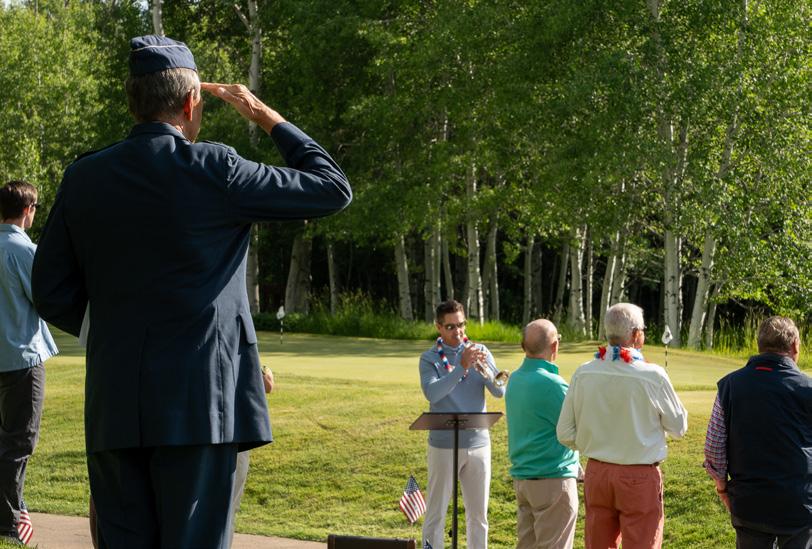

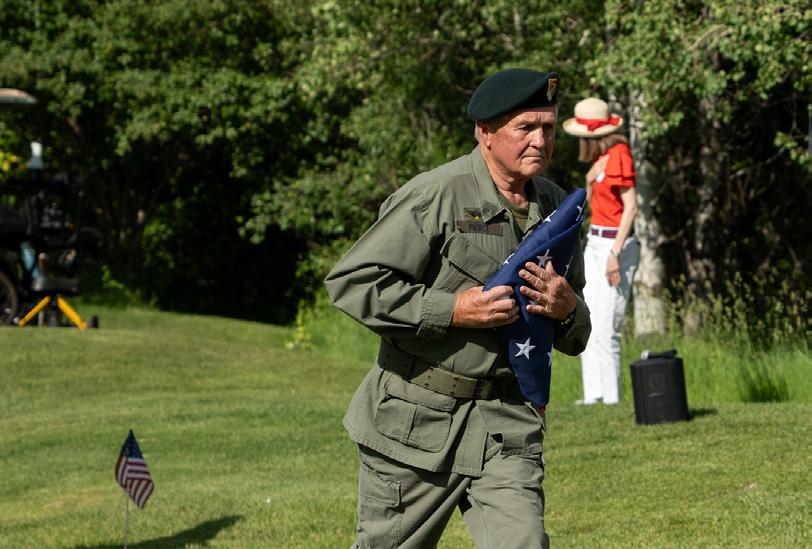
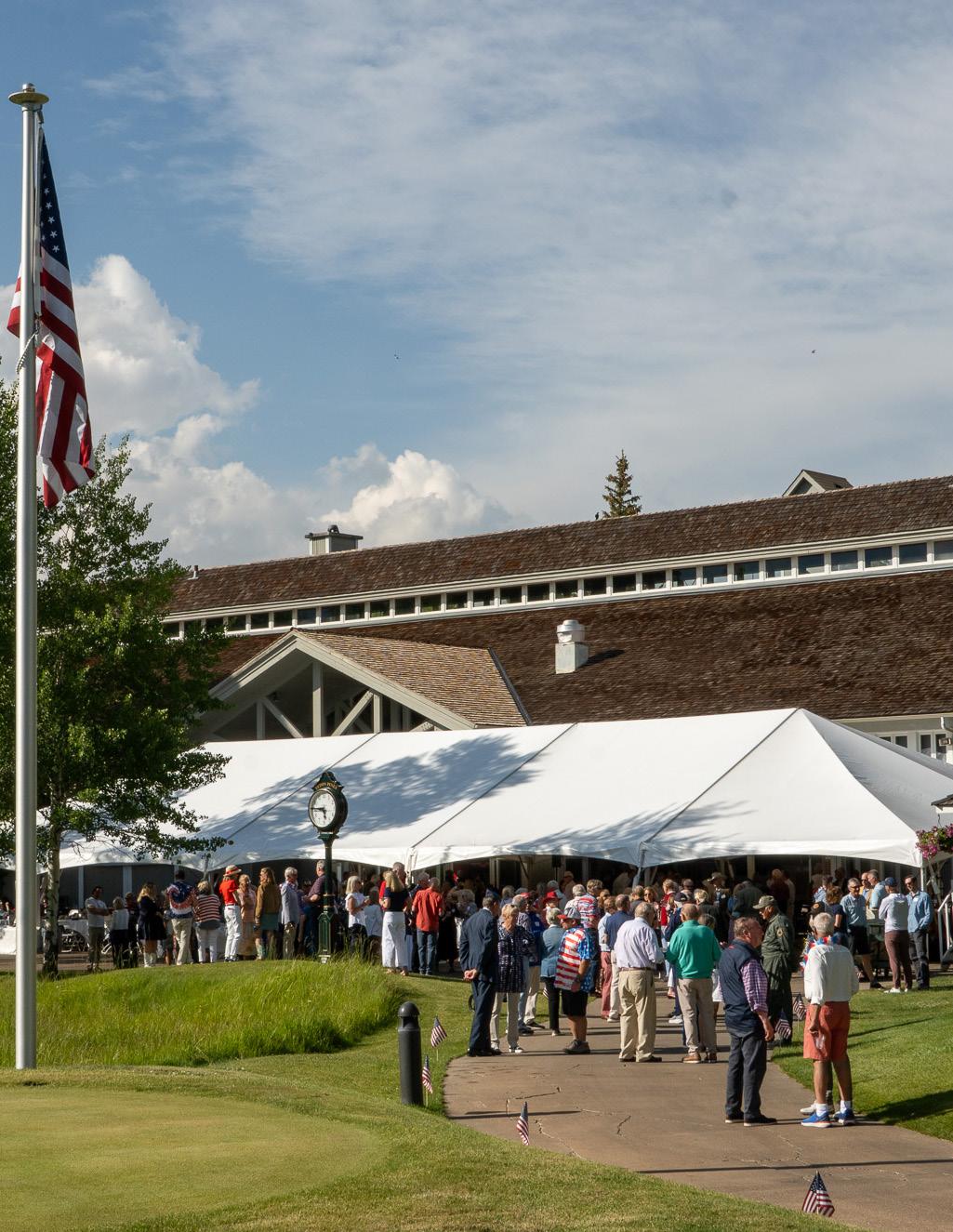
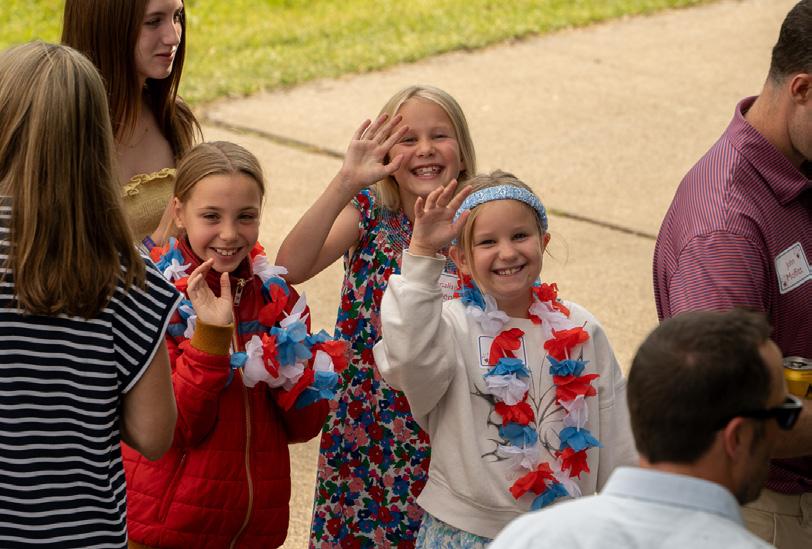
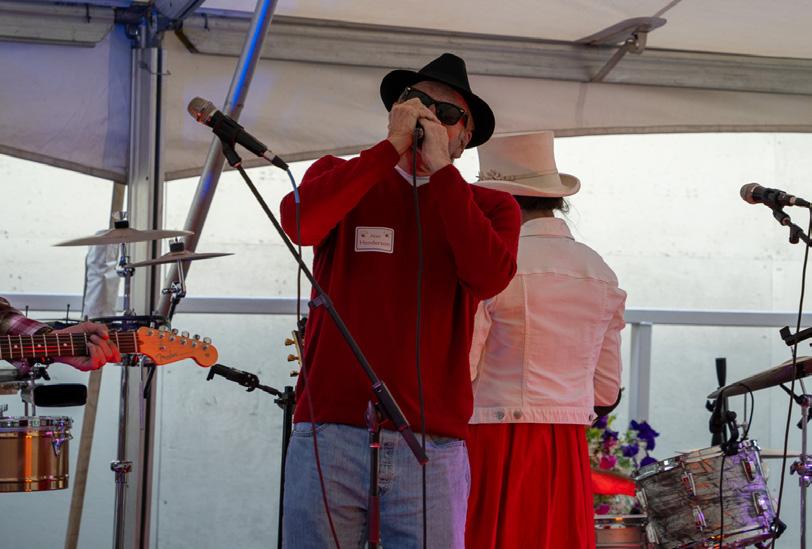
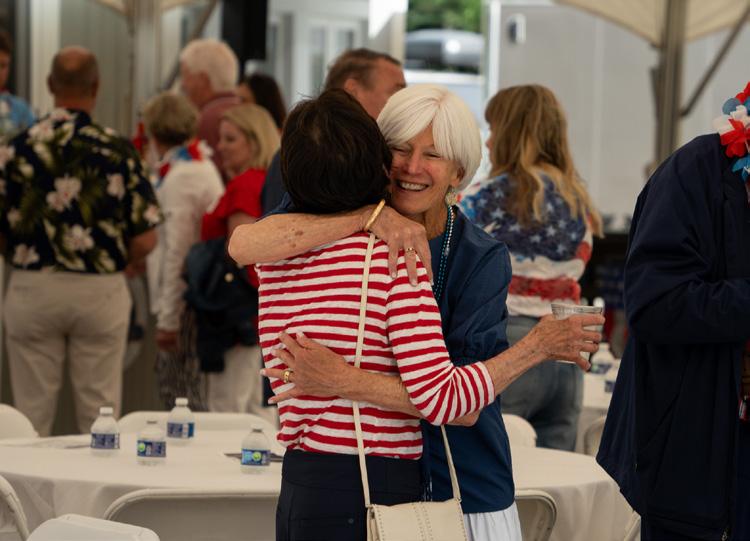
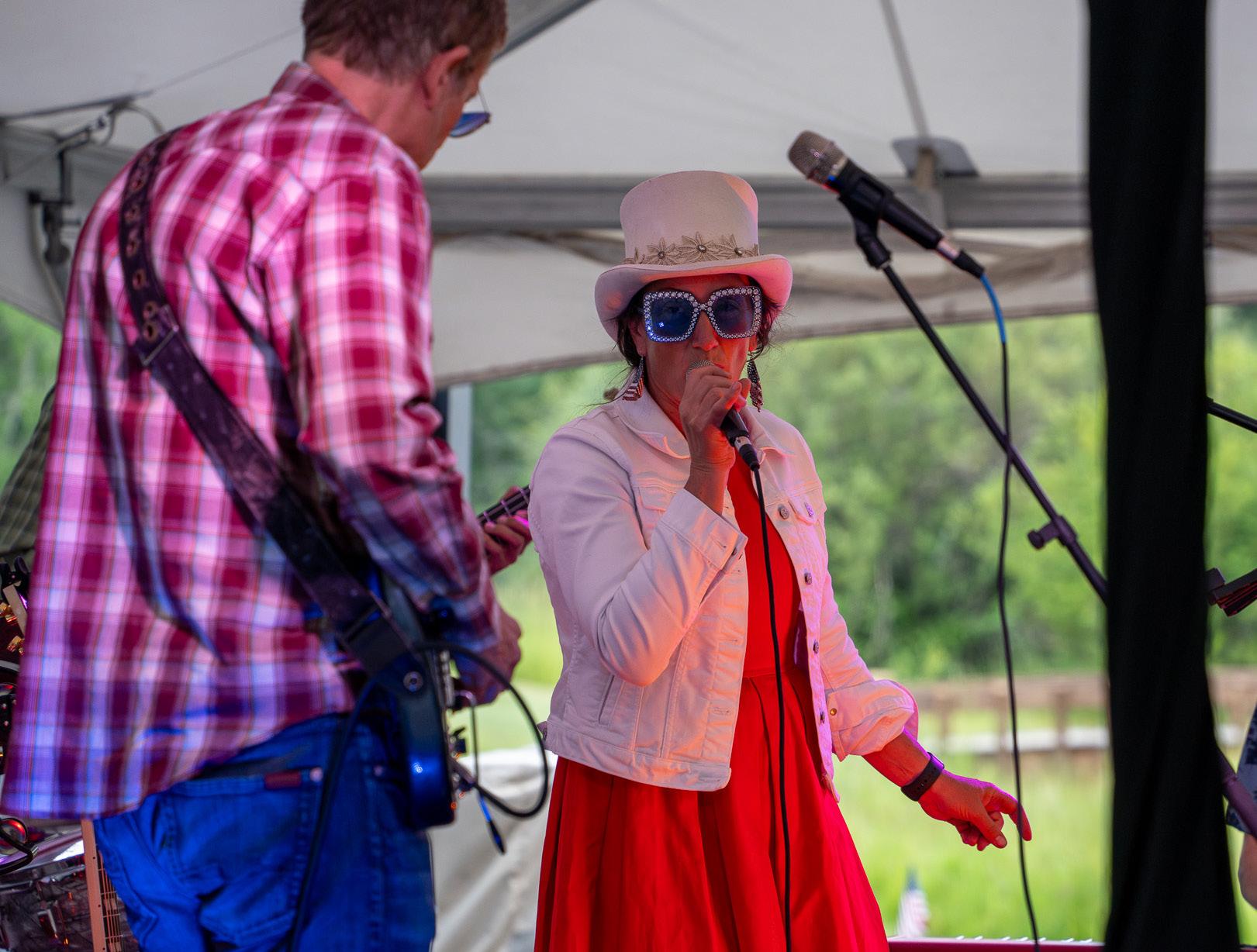
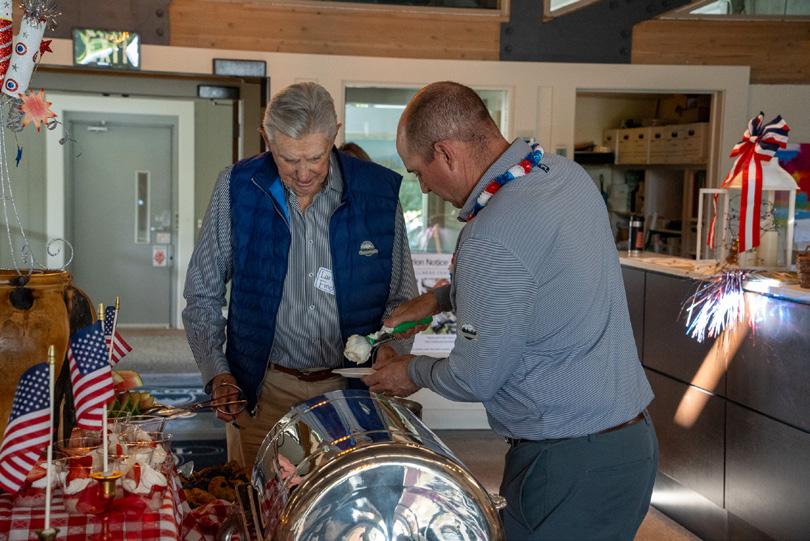
Adam Peters
When the “dogs days” of summer arrive, we crave wines that refresh and pair with our summer foods. There are three wines we have in house that delivered just what you need:
Vinho Verde
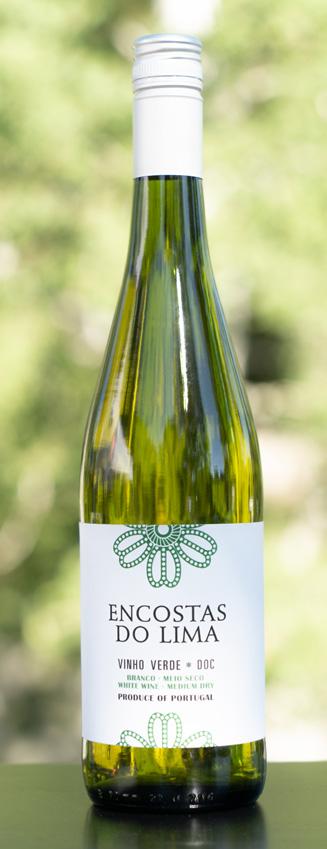
Hailing from a region in Portugal known for its famously crisp, low-alcohol white wines, this slightly fizzy wine burst with citrus and green-apple notes. It’s bonedry yet mouthwatering, keeping you cool on hot afternoons. It’s light body and zippy acidity make it a perfect pairing with fresh salads, shrimp, oysters, or even a simple plate of fruit and cheese.
Menu Pairing - Seared Red Tuna
Why it works: The acidity cuts through the unami and stands up to the wasabi in the dish.
This summer star comes from Spain’s Rias Basixas region. The white grapes give this wine a bright acidity and juicy flavors of peach, apricot, and citrus zest. You can even detect hints of a salty sea breeze from its coastal vineyards. Albariño is renowned for its ability to stand up to sea-

food like grilled fish, ceviche, or crab cakes. It does equally well on its own, offering a crisp, clean finish that is better than a plunge in a cool pool on a hot day.
Menu Pairing - Sake Crudo
Why it works: Bright acidity and spritz match the panzu tang found in the dish.
A hidden gem of northern Italy’s Piedmont region prized for its lively acidity and subtle aromas of green apple, lemon, and white flowers. It’s lean and bright with a touch of minerality that gives it serious refreshment power. It cuts through richer summer dishes like creamy pasta salads or roasted chicken. This wine keeps your palate awake and eager for the next bite.
Menu Pairing - Apple Blue Salad
Why it works: The wine matches the crispiness of apple and vinaigrette, while the acidity stands up to the blue cheese.
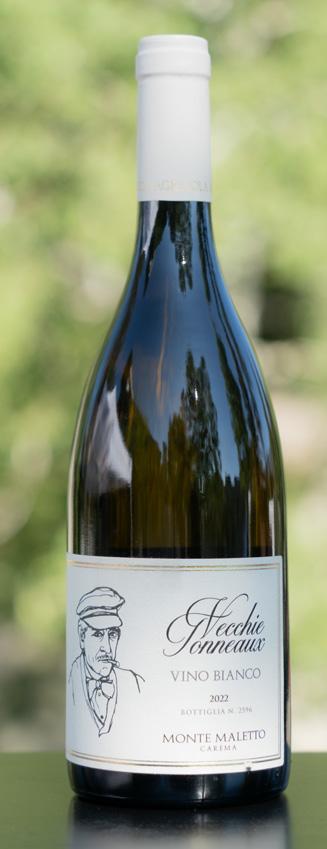
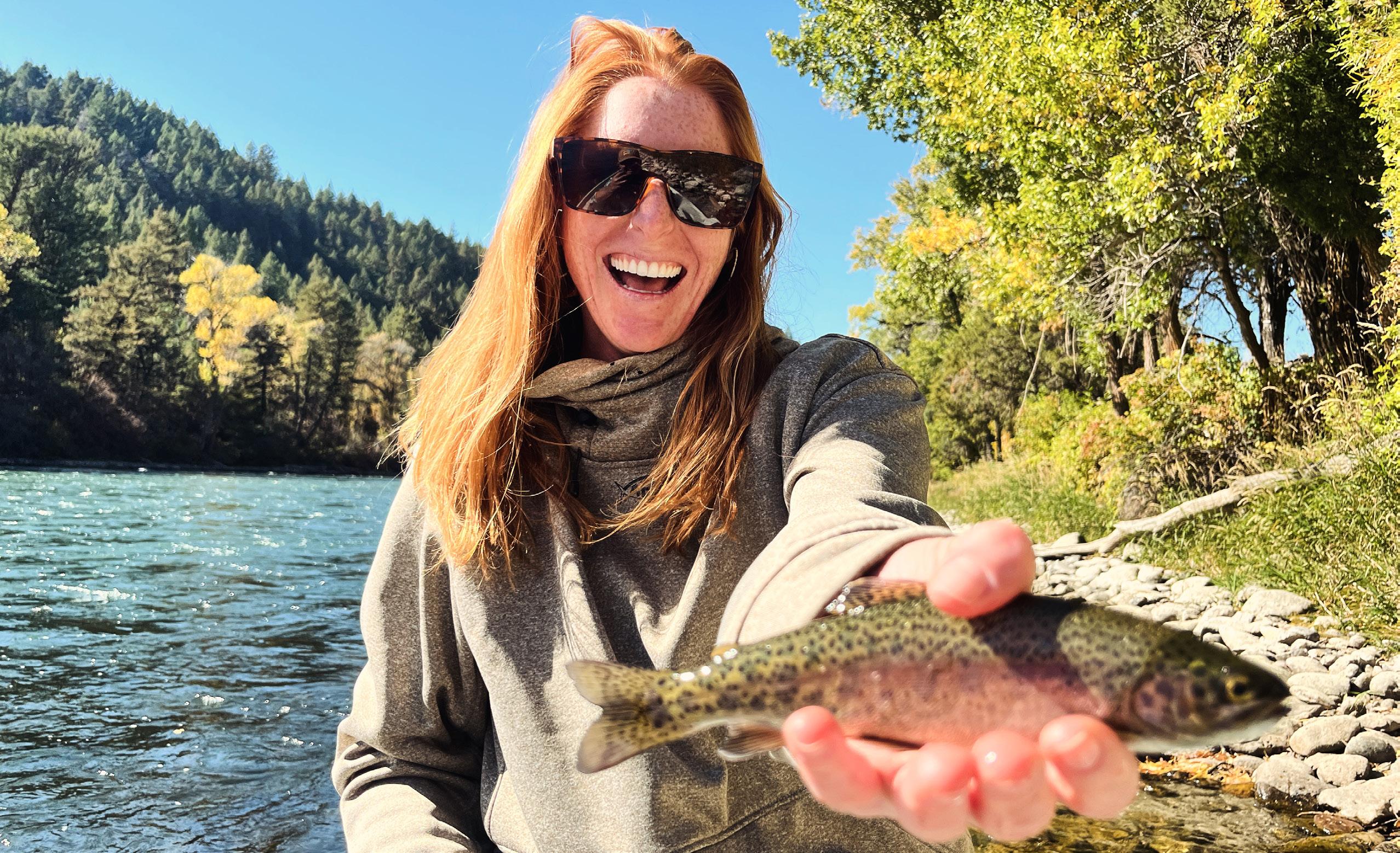
Liza van Dissel Director of Wellness & Activites
Someone recently said to me that “fly fishing is the Mountain Man (or Woman’s!) version of golf.” After some pondering on the statement I came to the conclusion that the two are incredibly similar. Stay with me here. When starting a round of golf, or stepping into a drift boat my mentality is alike. Time to exhale.
To me, golf is a more manicured approach to outdoor recreation while fly fishing is a bit more wild, but both are a fluid form of art as motion. Both golf
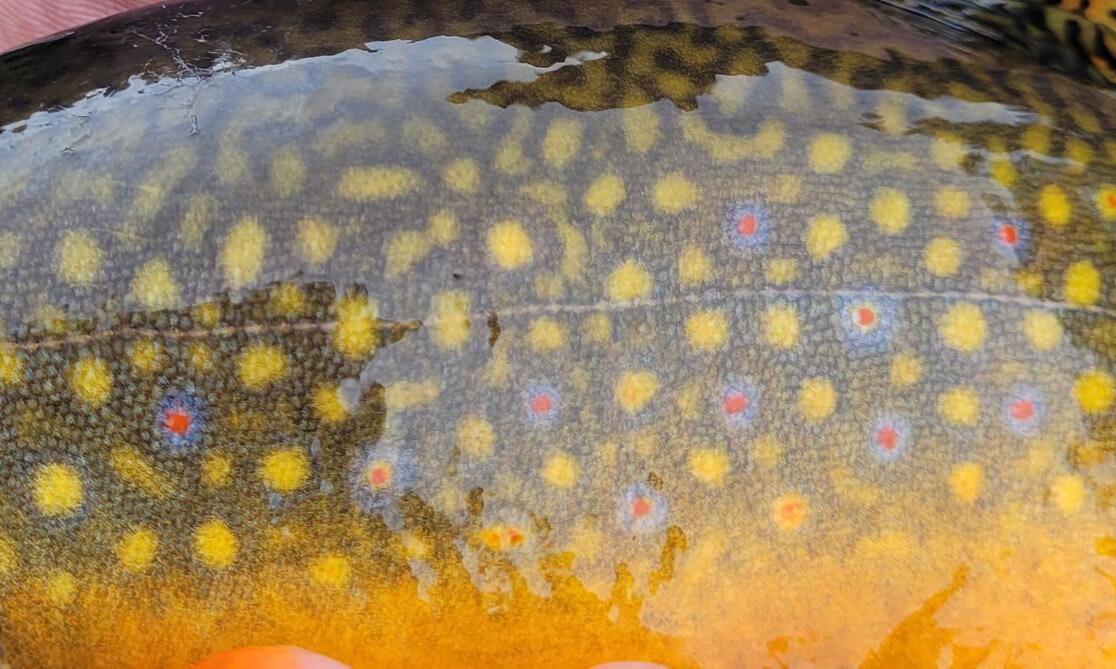
and fly fishing require patience, presence and a short memory when things go awry.
I like to approach many pastimes through the lens of wellness, and fly fishing is no exception. My view of the sport is that it is a mental and physical respite. In my busy schedule of work, fitness and more it is necessary to take a metaphorical breathe. Fly fishing provides this breathe. It allows me to be present. As I look down river, spot a perfect hole, and load up a cast the worries of the world melt away. Just like the attachment to my phone melts away through a round of eighteen.
Like golf, fly fishing is a sport for everyone regardless of age, experience, or ability. Whether you’re a first-time caster or a seasoned angler, the beauty of fly fishing lies in its accessibility while also being a lifelong learning journey. This focus on enjoyment over perfection makes it is easy to find joy in the art rather than the reward. Of course, I love a big cutthroat trout in the net as much as the next angler.
Speaking of putting fish in the net, our friends at Westbank Anglers have been so instrumental in bringing fly fishing to the club. The casting clinics run by Westbank Angler throughout the summer have grown in popularity. And I’m excited to offer the opportunity to hop on a drift boat with a Westbank Guide for some friendly member fishing competition! Even if you’ve never spent a day in a drift boat, or if you’re a seasoned angler, going out with a guide for a day is an absolute treat. You can expect great company, a beautiful view and most likely a few fish!
Did you know there are a few fish in the waters right here on our golf course? That’s right, Teton Pines was originally built to have year round trout habitat, a reality that persists to this day. Though the pond closest to our clubhouse runs dry in the winter, other streams and ponds throughout the property provide year round home to our favorite fish.
On August 25th, we will be having an event where we will go out on the course and have the opportunity to catch trout in our own backyard. Check out the club website for more details.
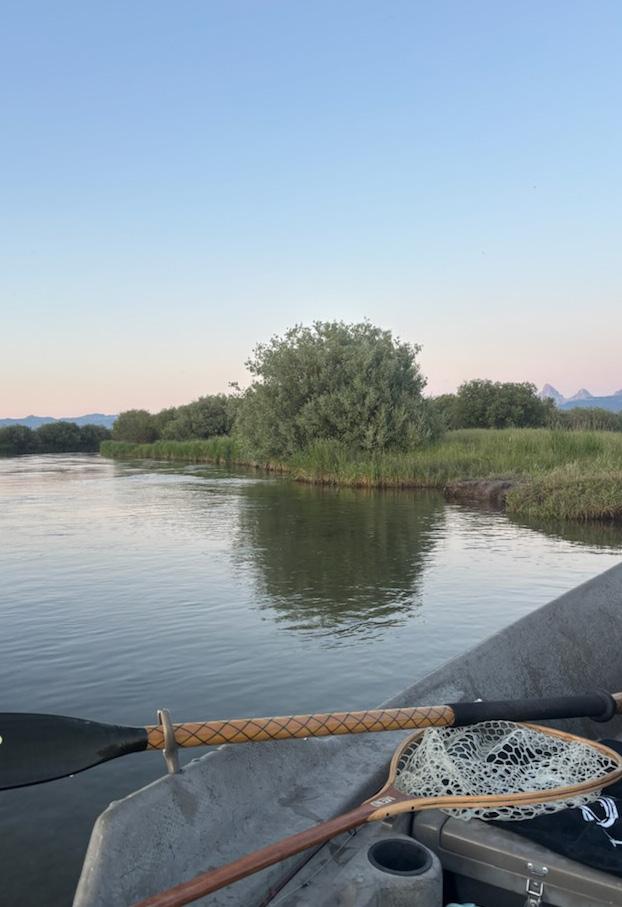
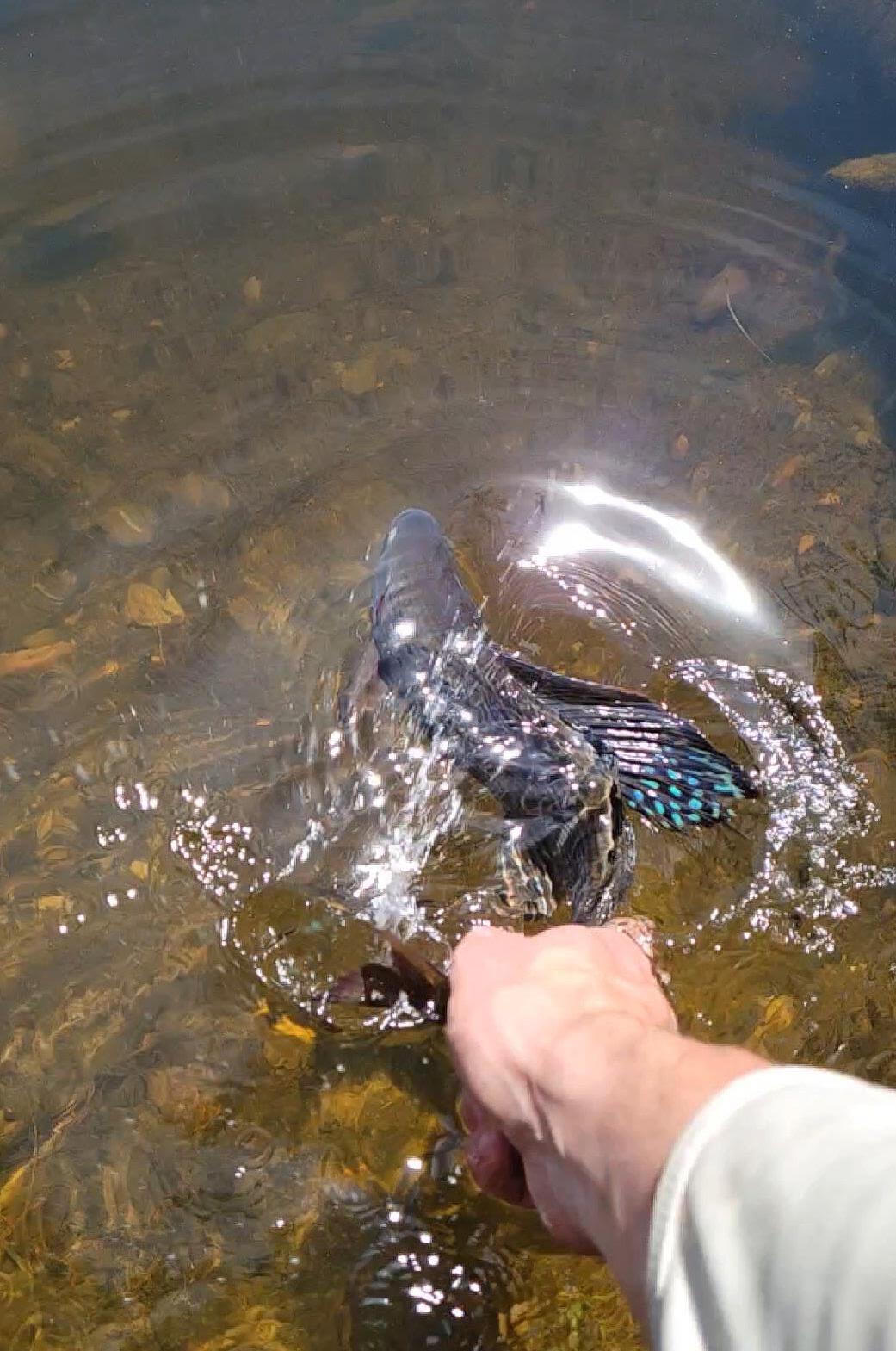
Sunday Monday Tuesday Wednesday
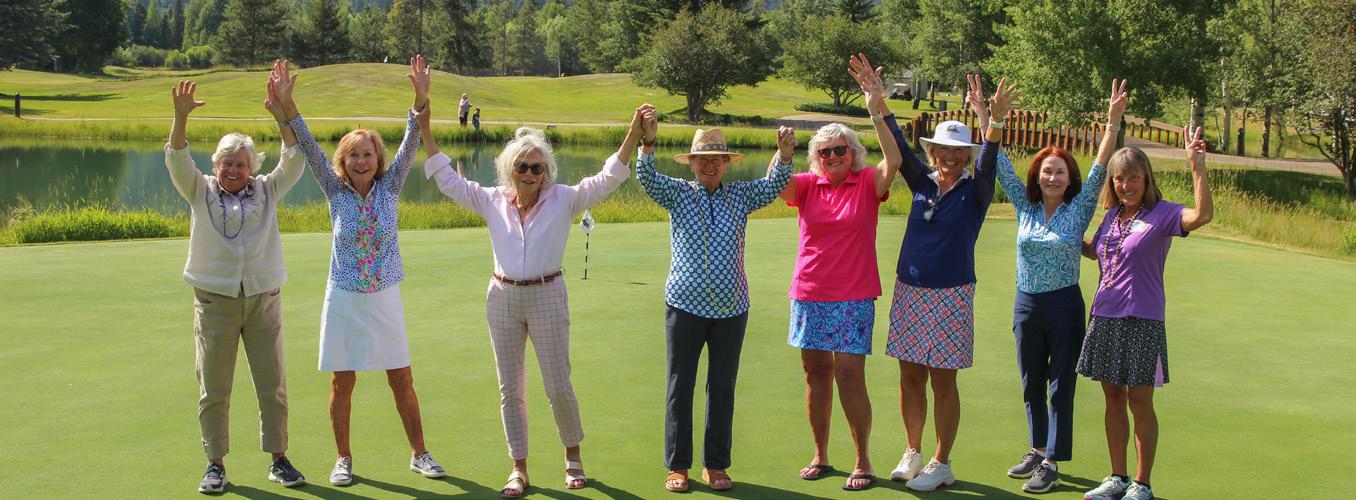
3
• 3pm Fun-day Pickleball Playday
• 4pm Restorative Yoga
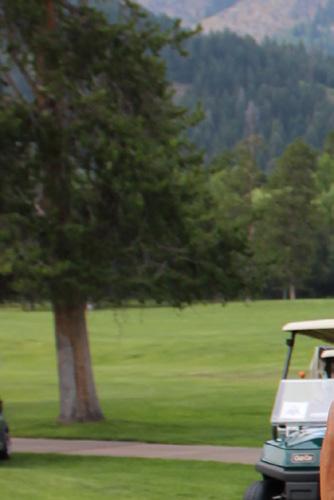
4
• 9am Camp Teton Pines Week 7
• 9:15am Retro Step
• 9:30am Beginner PB Drill
• 10am Water Aerobics
• 2pm Mah Jongg Open Play
• 3pm Juniors Tennis 12-18
• 4pm 4.0+ Doubles Tournament
• 4pm Monday Mixer
• 4:30pm Juniors Tennis 5-11
• 3pm Fun-day Pickleball Playday
• 4pm Restorative Yoga
5
• 8am Power Fitness
• 9am Intermediate Tennis Drill
• 9am & 10:15am Ladies’ Clinic
• 9:15am Yoga Flow
• 9:30am Advanced PB Drill
• 10:30am Advanced Tennis Drill
• 11am Intermediate PB Drill
• 4pm 4.0+ Doubles Tournament
• 5pm Palmer Program 6-12
11
• 9am Camp Teton Pines Week 8
• 9:15am Retro Step
• 9:30am Beginner PB Drill
• 10am Water Aerobics
• 2pm Mah Jongg Open Play
• 3pm Juniors Tennis 12-18
• 4pm Monday Mixer
• 4:30pm Juniors Tennis 5-11
• 5:30pm Advanced Tennis Play
17
• 11am Family Scavenger Hunt
• 3pm Fun-day Pickleball Playday
• 4pm Restorative Yoga
12
• 8am Power Fitness
• 9am Intermediate Tennis Drill
• 9am & 10:15am Ladies’ Clinic
• 9:15am Yoga Flow
• 9:30am Advanced PB Drill
• 10:30am Advanced Tennis Drill
• 11am Intermediate PB Drill
• 5pm Palmer Program 6-12
• 5:30pm Cocktail Party & Buffet
• 8am Vinyasa Yoga
• 8:30am Fly Fishing
• 9:15am Power
• 9:30am Open
• 10am Water Aerobics
• 10am Teen Tennis
• 1pm Wyoming
• 1:30pm Master
• 5:30pm Live Music
• 5:30pm Evening
• 8am Vinyasa Yoga
• 9:15am Power
• 9:30am Open
• 10am Water Aerobics
• 1:30pm Master
• 3pm Junior Dev
• 3pm Juniors Tennis
• 4:10pm Junior
• 4:30pm Juniors
• 5:30pm Live Music
• 5:30pm Evening
18
• 9am Camp Teton Pines Week 9
• 9:15am Retro Step
• 9:30am Beginner PB Drill
• 10am Water Aerobics
• 2pm Mah Jongg Open Play
• 3pm Juniors Tennis 12-18
• 4pm Monday Mixer
• 4:30pm Juniors Tennis 5-11
• 5:30pm Advanced Tennis Play
24
• 3pm Fun-day Pickleball Playday
• 4pm Restorative Yoga
• 9am Casting on the Greens
• 9:15am Retro Step
• 9:30am Beginner PB Drill
• 10 am Water Aerobics
31
• 3pm Fun-day Pickleball Playday
• 2pm Mah Jongg Open Play
• 3pm Juniors Tennis 12-18
• 4pm Monday Mixer
• 4:30pm Juniors Tennis 5-11
25
• 5:30pm Advanced Tennis Play
• 8am Power Fitness
19
• 9am Intermediate Tennis Drill
• 9am & 10:15am Ladies’ Clinic
• 9:15am Yoga Flow
• 9:30am Advanced PB Drill
• 10:30am Advanced Tennis Drill
• 11am Intermediate PB Drill
• 5pm Palmer Program 6-12
• 5:30pm Final Cocktail Party
26
• 8am Power Fitness
• 9am Intermediate Tennis Drill
• 9:15am Yoga Flow
• 9:30am Advanced PB Drill
• 10:30am Advanced Tennis Drill
• 11am Intermediate PB Drill
• 8am Vinyasa Yoga
• 9:15am Power
• 9:30am Open
• 10am Water Aerobics
• 1:30pm Master
• 3pm Junior Dev
• 3pm Juniors Tennis
• 4:10pm Junior
• 4:30pm Juniors
• 5:30pm Live Music
• 5:30pm Evening
• 8am Vinyasa Yoga
• 9am Ladies’ Club
• 9:15am Power
• 9:30am Open
• 10am Water Aerobics
• 1:30pm Master
• 3pm Juniors Tennis
• 4:30pm Juniors
• 5:30pm Live Music
• 5:30pm Evening
For the most updated information check the Club Calendar on our website!
Wednesday Thursday Friday Saturday 1
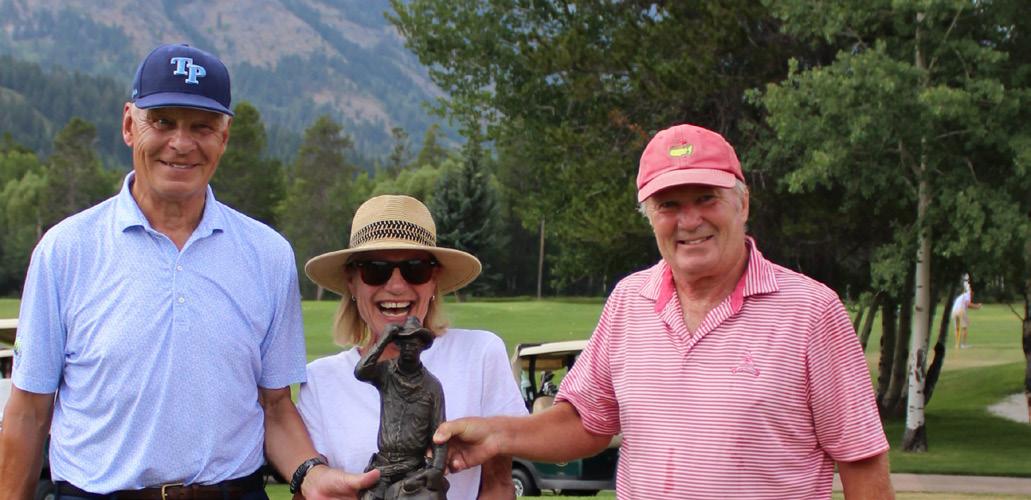
6
Yoga
Fishing Tournament Power Hour
PB Playday
Aerobics
Tennis Camp
Wyoming Congressional
Master Swim Music
Evening Mixed Tennis
13
Yoga
Power Hour
PB Playday
Aerobics
Master Swim Dev Program
Tennis 12-18
Junior Dev Play
Juniors Tennis 5-11
Music
Evening Mixed Tennis
20
Yoga Power Hour
PB Playday
Master Swim
Program Tennis 12-18
Junior Dev Play
Juniors Tennis 5-11
Tennis
27
Yoga Club Championship Power Hour PB Playday Aerobics Master Swim Tennis 12-18 Juniors Tennis 5-11
• 8am Rise Mat Pilates
• 9am Ladies Sloshie Cup
• 9:15am Yoga Flow
• 10am Teen Tennis Camp
• 11:30am Half-off for Her
• 1:30pm Masters Swim
• 3pm Mah Jongg Open Play
• 8am Rise Yoga
• 8:30am Round Up
• 9:15am Functional Fitness
• 4pm Open Pickleball Playday
• 8:15am Yoga Flow
• 8:30am Round Up
• 10am Mixed Tennis Playday
• 6pm GTMF Tickets
• 8am Rise Mat Pilates
• 9am Advanced Tennis Drill
• 9am Ladies’ Tee It Up for Oncology
• 9:15am Yoga Flow
• 10:30am Intermediate Tennis
• 11:30am Half-off for Her
• 1:30pm Masters Swim
• 3pm Mah Jongg Open Play
• 5pm Speaker Series
• 8am Rise Mat Pilates
• 9am Advanced Tennis Drill
• 9am Ladies’ Guest Day
• 9:15am Yoga Flow
• 10:30am Intermediate Tennis
• 11am Ladies’ 9-Hole
• 11:30am Half-off for Her
• 1:30pm Masters Swim
• 3pm Mah Jongg Open Play
7
• 8am Rise Yoga
• 8:30am SUP on the Snake
• 9:15am Functional Fitness
• 10am Teen Tennis Camp
• 4pm Open Pickleball Playday
8
• 8:15am Yoga Flow
• 9am Saturday Men’s Game
• 10am Mixed Tennis Playday
• 4pm Family Par 3
• 5:30pm Live Music
• 5:30pm Lobster Night
• 6pm GTMF Tickets
2
9
14
• 8am Rise Yoga
• 9:15am Functional Fitness
• 12pm Men’s Tee It Up for Oncology
15
• 4pm Open Pickleball Playday
• 6pm GTMF Tickets
• 8:15am Yoga Flow
• 9am Saturday Men’s Game
16
• 9am Men’s Doubles Tournament
• 9am Monthly Hiking Group
• 4pm Family Par 3
• 5:30pm Live Music
• 5:30pm Lobster Night
• 6pm GTMF Tickets
21
• 8am Rise Yoga
• 9:15am Functional Fitness
• 12pm Men’s Club Championship
22
• 4pm Open Pickleball Playday
• 8:15am Yoga Flow
23
• 9am Men’s Club Championship
• 10am Mixed Tennis Playday
• 5:30pm Kid’s Movie Night
• 5:30pm Live Music
• 5:30pm Lobster Night
28
• 8am Rise Mat Pilates
• 9am Advanced Tennis Drill
• 9am Ladies’ Club Championship
• 9am Ladies’ Presidents Cup
• 9:15am Yoga Flow
• 10:30am Intermediate Tennis
• 11:30am Half-off for Her
• 1:30pm Masters Swim
• 3pm Mah Jongg Open Play
• 4:30pm Poolside Bingo
• 8am Rise Yoga
• 9:15am Functional Fitness
29
• 4pm Open Pickleball Playday
• 8:15am Yoga Flow
• 9am Saturday Men’s Game
• 10am Mixed Tennis Playday
• 4pm Family Par 3
• 5:30pm Live Music
• 5:30pm Final Lobster Night
30
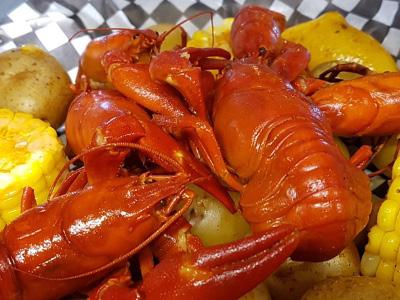
7
• 3pm Fun-day Pickleball Playday
• 9am Labor Day Mixer
• 9:15am Retro Step
• 9:30am Beginner PB Drill
• 2pm Mah Jongg Open Play
• 5pm Labor Day Crawfish Boil
• 5:30pm Advanced Tennis Play
• Last Day of the Pool Season
1
2
• 8am Power Fitness
• 9am Intermediate Tennis Drill
• 9:15am Yoga Flow
• 9:30am Advanced PB Drill
• 10:30am Advanced Tennis Drill
• 11am Intermediate PB Drill
• 12pm Men’s Teton Cup
8
• 9:15am Retro Step
• 9:30am Beginner PB Drill
• 9:30am Tennis Camp
• 2pm Mah Jongg Open Play
• 4pm Employee/Member Mixer
14
• 3pm Fun-day Pickleball Playday
• 9:15am Retro Step
• 9:30am Beginner PB Drill
• 2pm Mah Jongg Open Play
• 3:45pm Juniors Tennis 5-11
• 4:30pm Juniors Tennis 12-18
• 5pm Monday Night Football
15
• 5:30pm Advanced Tennis Play
21
• 3pm Fun-day Pickleball Playday
• 9:15am Retro Step
• 9:30am Beginner PB Drill
• 2pm Mah Jongg Open Play
• 3:45pm Juniors Tennis 5-11
• 4:30pm Juniors Tennis 12-18
22
• 8am Power Fitness
• 9:15am Yoga Flow
• 9:30am Advanced PB Drill
• 9:30am Tennis Camp
• 11am Intermediate PB Drill
9
• 8am Vinyasa Yoga
• 9:15am Power
• 9:30am Open
• 12pm Men’s Teton
• 5:30pm Evening
• 5:30pm Live Music
16
• 8am Power Fitness
• 9am Intermediate Tennis Drill
• 9:15am Yoga Flow
• 9:30am Advanced PB Drill
• 10:30am Advanced Tennis Drill
• 11am Intermediate PB Drill
• 3:45pm Juniors Tennis 5-11
• 4pm Fly Casting Clinic
• 4:30pm Juniors Tennis 12-18
23
• 8am Power Fitness
• 9am Intermediate Tennis Drill
• 9:15am Yoga Flow
• 9:30am Advanced PB Drill
• 10:30am Advanced Tennis Drill
• 8am Vinyasa Yoga
• 9:15am Power
• 9:30am Open
• 9:30am Tennis
• 5:30pm Live Music
• 8am Vinyasa Yoga
• 9:15am Power
• 9:30am Open
• 5:30pm Evening
• 5:30pm Live Music
• 8am Vinyasa Yoga
• 9:15am Power
• 9:30am Open
• 5:30pm Evening
• 5:30pm Live Music
• 5:30pm Advanced Tennis Play
• 6:15pm Monday Night Football
28
• 3pm Fun-day Pickleball Playday
• 9:15am Retro Step
• 2pm Mah Jongg Open Play
• 3:45pm Juniors Tennis 5-11
• 4:30pm Juniors Tennis 12-18
29
• 11am Intermediate PB Drill
• 3:45pm Juniors Tennis 5-11
• 4:30pm Juniors Tennis 12-18
• 5:30pm Trivia Night
• 8am Power Fitness
• 9:15am Yoga Flow
30
• 10am Intermediate Tennis Drill
• 3:45pm Juniors Tennis 5-11
• 5:15pm Monday Night Football
• 6pm Advanced Tennis Playday
• 4:30pm Juniors Tennis 12-18
• 6:30pm PB Live Ball

3
Yoga
Power Hour
PB Playday
Teton Cup
For the most updated information check the Club Calendar on our website!
Evening Mixed Tennis Music 4
• 8am Rise Mat Pilates
• 9am Advanced Tennis Drill
• 9am Ladies’ Closing Day
• 9:15am Yoga Flow
• 10:30am Intermediate Tennis
• 11am Ladies’ 9-Hole
• 11:30am Half-off for Her
• 3pm Mah Jongg Open Play
Yoga
Hour
PB Playday Tennis Camp Music
10
11
• 8am Rise Mat Pilates
• 9am Ladies’ Day
• 9:15am Yoga Flow
• 9:30am Tennis Camp
• 11:30am Half-off for Her
• 3pm Mah Jongg Open Play
17
Yoga
Power Hour
PB Playday
Evening Mixed Tennis Music
24
Yoga
Power Hour
PB Playday
Evening Mixed Tennis Music
• 8am Rise Mat Pilates
• 9am Advanced Tennis Drill
• 9am Ladies’ Day
• 9:15am Yoga Flow
• 10:30am Intermediate Tennis
• 11am Ladies’ 9-Hole
• 11:30am Half-off for Her
• 3pm Mah Jongg Open Play
• 5pm Speaker Series
• 8am Rise Mat Pilates
• 9am Advanced Tennis Drill
• 9am Ladies’ Day
• 9:15am Yoga Flow
• 10:30am Intermediate Tennis
• 11:30am Half-off for Her
• 3pm Mah Jongg Open Play
• 4:30pm Bingo Night
• 8am Rise Yoga
• 9:15am Functional Fitness
• 4pm Open Pickleball Playday
5
• 8:15am Yoga Flow
• 9am Saturday Men’s Game
• 10am Mixed Tennis Playday
• 11:30am College Football
• 4pm Family Par 3 Golf
• 5:30pm Live Music
6
12
• 8am Rise Yoga
• 9:15am Functional Fitness
• 12pm Men’s Interclub
• 4pm Open Pickleball Playday
• 8:15am Yoga Flow
• 9am Monthly Hiking Group
• 9am Saturday Men’s Game
• 9am Women’s Doubles Tournament
• 11:30am College Football
• 4pm Family Par 3 Golf
• 5:30pm Live Music
13
18
• 8am Rise Yoga
• 9:15am Functional Fitness
19
• 4pm Open Pickleball Playday
• 5:30pm Kid’s Movie Night
• 8:15am Yoga Flow
• 9am Saturday Men’s Game
• 10am Mixed Tennis Playday
• 11:30am College Football
• 4pm Family Par 3 Golf
• 6pm Oktoberfest Party
20
25
• 8am Rise Yoga
• 9:15am Functional Fitness
26
• 4pm Open Pickleball Playday
• 8:15am Yoga Flow
• 10am Mixed Tennis Playday
• 11am Arnie’s Revenge
• 11:30am College Football
• 4pm Family Par 3 Golf
27


5
• 3pm Fun-day Pickleball Playday
• 9:15am Retro Step
• 2pm Mah Jongg Open Play
• 3:45pm Juniors Tennis 5-11
• 4:30pm Juniors Tennis 12-18
• 6pm Advanced Tennis Play
12
• 3pm Fun-day Pickleball Playday
6
• 6:15pm Monday Night Football
13
• 9:15am Retro Step
• 2pm Mah Jongg Open Play
• 3:45pm Juniors Tennis 5-11
• 4:30pm Juniors Tennis 12-18
• 5:15pm Monday Night Football
• 6pm Advanced Tennis Play
19
• Final Day of the Golf Season
• 3pm Fun-day Pickleball Playday
• 9:15am Retro Step
• 2pm Mah Jongg Open Play
• 3:45pm Juniors Tennis 5-11
• 4:30pm Juniors Tennis 12-18
• 5pm Monday Night Football
• 6pm Advanced Tennis Play
20
• 8am Power Fitness
• 9:15am Yoga Flow
• 10am Intermediate Tennis Drill
• 1pm Foodie Field Trip
• 3:45pm Juniors Tennis 5-11
• 4:30pm Juniors Tennis 12-18
• 6:30pm PB Live Ball
• 8am Power Fitness
• 9:15am Yoga Flow
7
• 8am Vinyasa Yoga
• 9:15am Power
• 10am Advanced
• 6pm Evening
26
• 3pm Fun-day Pickleball Playday
• 9:15am Retro Step
• 2pm Mah Jongg Open Play
• 3:45pm Juniors Tennis 5-11
• 4:30pm Juniors Tennis 12-18
• 6pm Monster Smash Tennis
27
• 6:15pm Monday Night Football
14
• 10am Intermediate Tennis Drill
• 3:45pm Juniors Tennis 5-11
• 4:30pm Juniors Tennis 12-18
• 5:30pm Trivia Night
• 6:30pm PB Live Ball
• 8am Power Fitness
• 9:15am Yoga Flow
• 8am Vinyasa Yoga
• 9:15am Power
• 10am Advanced
• 6pm Evening
• 8am Vinyasa Yoga
• 9:15am Power
• 10am Advanced
• 6pm Evening
21
• 10am Intermediate Tennis Drill
• 3:45pm Juniors Tennis 5-11
• 4:30pm Juniors Tennis 12-18
• 6:30pm PB Live Ball
• 8am Vinyasa Yoga
• 9:15am Power
• 10am Advanced
• 6pm Evening
28
• 8am Power Fitness
• 9:15am Yoga Flow
• 10am Intermediate Tennis Drill
• 3:45pm Juniors Tennis 5-11
• 4:30pm Juniors Tennis 12-18
• 6pm Dink or Treat PB
• 8am Vinyasa Yoga
• 9:15am Power
• 10am Advanced
• 6pm Evening
1
Yoga
Advanced Tennis Drill Mixed Tennis
8
Yoga Power Hour
Advanced Tennis Drill
Mixed Tennis
• 8am Rise Mat Pilates
• 9:15am Yoga Flow
• 11:30am Half-off for Her
• 2pm Intermediate Tennis Drill
• 3pm Mah Jongg Open Play
• 3:30pm PB Skills & Drills
2
9
• 8am Rise Mat Pilates
• 9:15am Yoga Flow
• 11:30am Half-off for Her
• 2pm Intermediate Tennis Drill
• 3pm Mah Jongg Open Play
• 3:30pm PB Skills & Drills
15
Yoga
Power Hour
Advanced Tennis Drill
Mixed Tennis
16
• 8am Rise Mat Pilates
• 9:15am Yoga Flow
• 11:30am Half-off for Her
• 2pm Intermediate Tennis Drill
• 3pm Mah Jongg Open Play
• 3:30pm PB Skills & Drills
• 8am Rise Yoga
• 9:15am Functional Fitness
• 4pm Open Pickleball Playday
3
10
• 8am Rise Yoga
• 9:15am Functional Fitness
• 4pm Open Pickleball Playday
• 8:15am Yoga Flow
• 10am Mixed Tennis Playday
• 11:30am College Football
4
11
• 8:15am Yoga Flow
• 10am Mixed Tennis Playday
17
• 8am Rise Yoga
• 9:15am Functional Fitness
• 4pm Open Pickleball Playday
• 8:15am Yoga Flow
• 10am Mixed Tennis Playday
• 11:30am College Football
18
• 8am Rise Mat Pilates
• 9:15am Yoga Flow
• 11:30am Half-off for Her
• 2pm Intermediate Tennis Drill
• 3pm Mah Jongg Open Play
• 3:30pm PB Skills & Drills 24
• 8am Rise Yoga
• 9:15am Functional Fitness
• 4pm Open Pickleball Playday
• 8:15am Yoga Flow
• 10am Mixed Tennis Playday
• 11:30am College Football
• 5:30pm Pumpkin Painting & Kid’s Movie Night 29 Yoga
Advanced Tennis Drill Mixed Tennis 30
• 8am Rise Mat Pilates
• 9:15am Yoga Flow
• 11:30am Half-off for Her
• 2pm Intermediate Tennis Drill
• 3pm Mah Jongg Open Play
• 3:30pm PB Skills & Drills
• 8am Rise Yoga
• 9:15am Functional Fitness
31
• 11:30am Final Lunch of the Season
• 4pm Open Pickleball Playday
25
• 5:30pm Final Dinner of the Season
1
Are you passionate about writing or have a story to share? We want to feature YOU in our next issue of the Whispers! This is your chance to showcase your creativity, insights and expertise with our vibrant community.
For our upcoming edition, we’re seeking member-submitted articles that inspire, educate, or entertain. Whether it’s a lifestyle piece, an educational deep dive, or a blend of both, your voice can shine through the pages of our publication.
Here are a few ideas to spark your imagination:
• Share your tips for mastering a hobby or skill.
• Write about a memorable travel adventure or life experience.
• Offer advice on health, wellness, or personal growth.
• Highlight a cause or initiative close to your heart.
Submissions should be:
• Original content written by you.
• 1,000-2,500 words in length.
• Life-style focused or educational in nature.
Deadline for submissions: October 1st, 2025
To submit your article or for more details, please email Clark@tetonpines.com. We can’t wait to read your work and celebrate the talent within our community!
